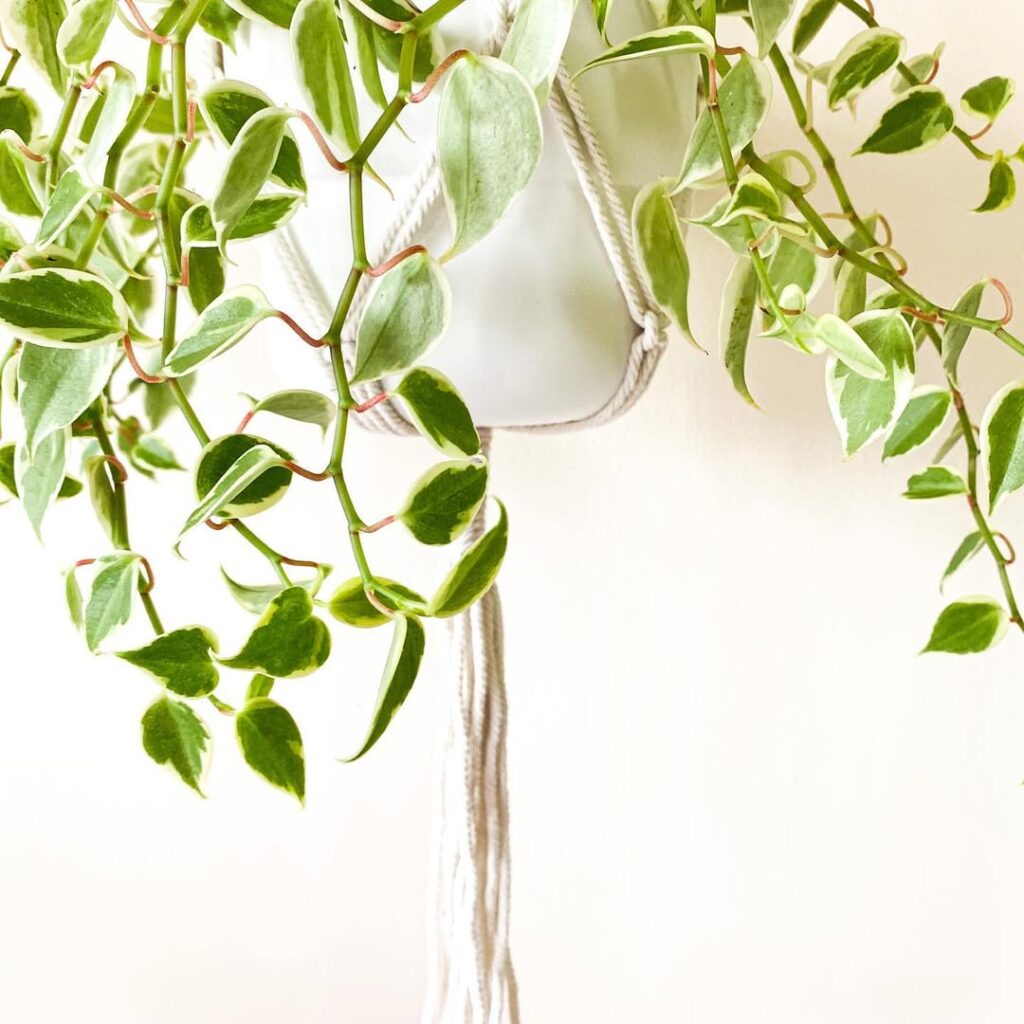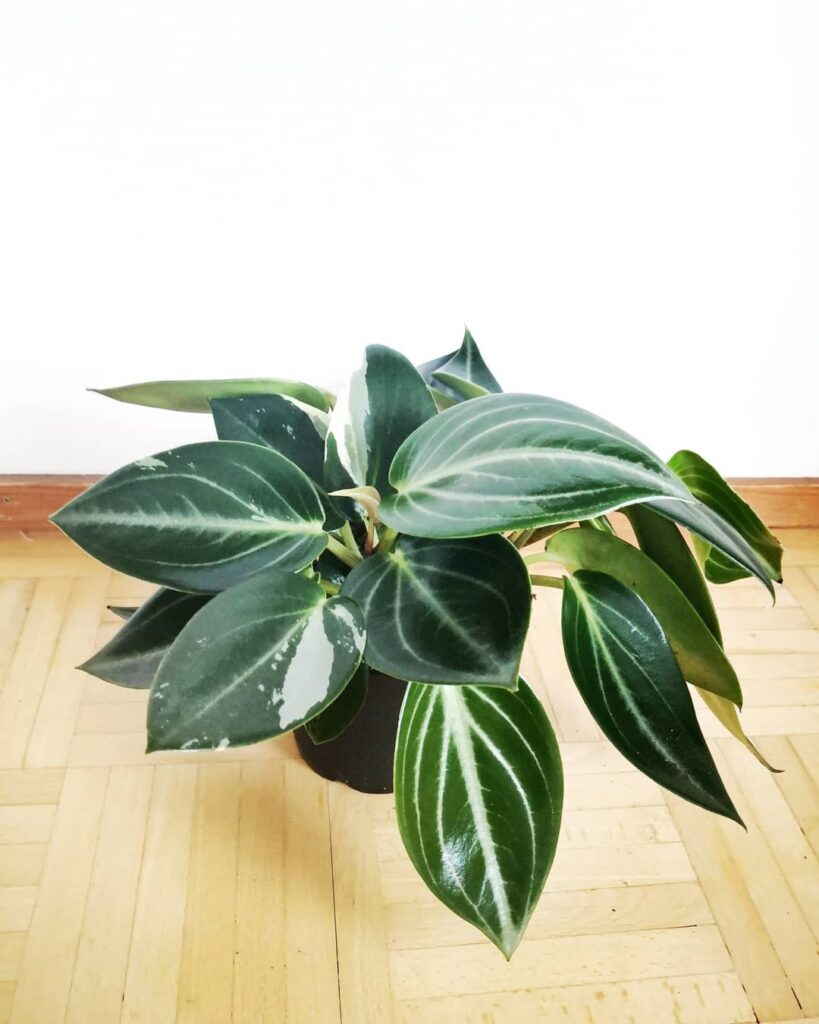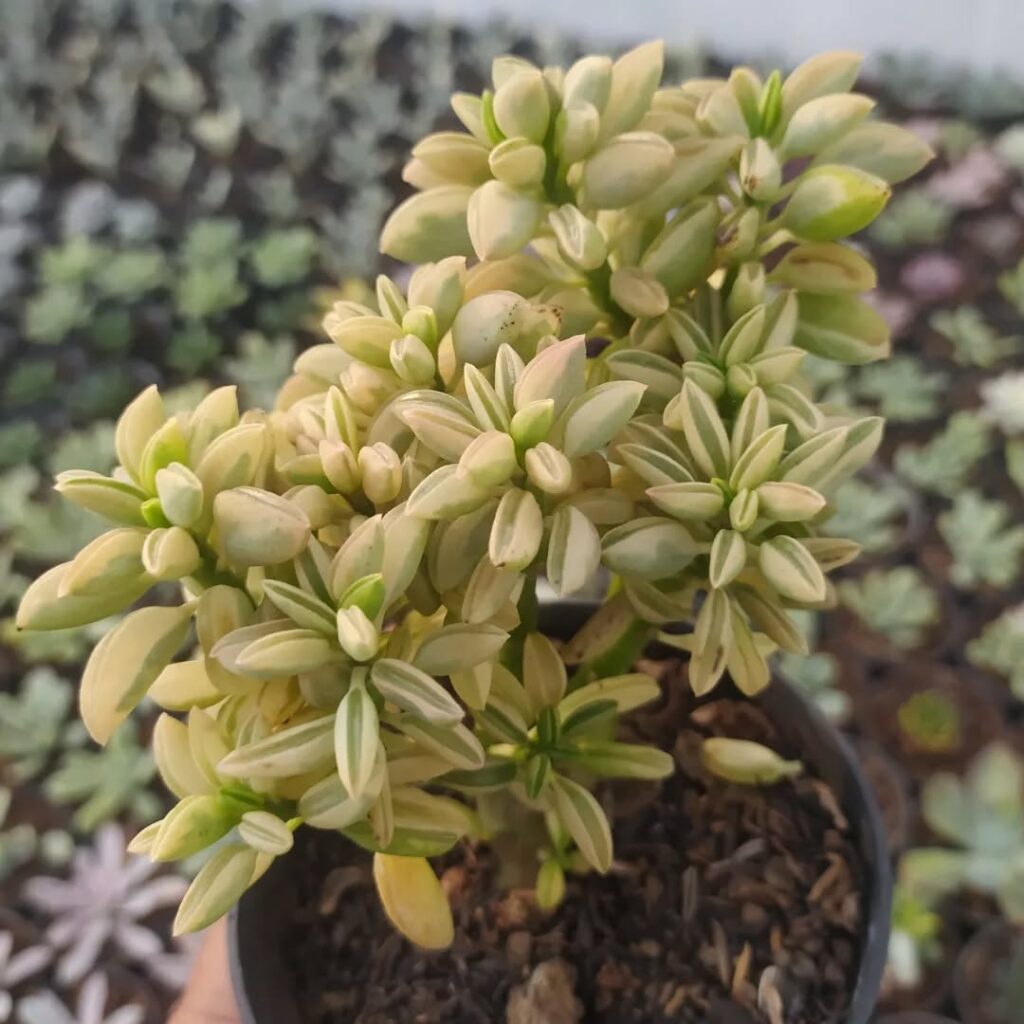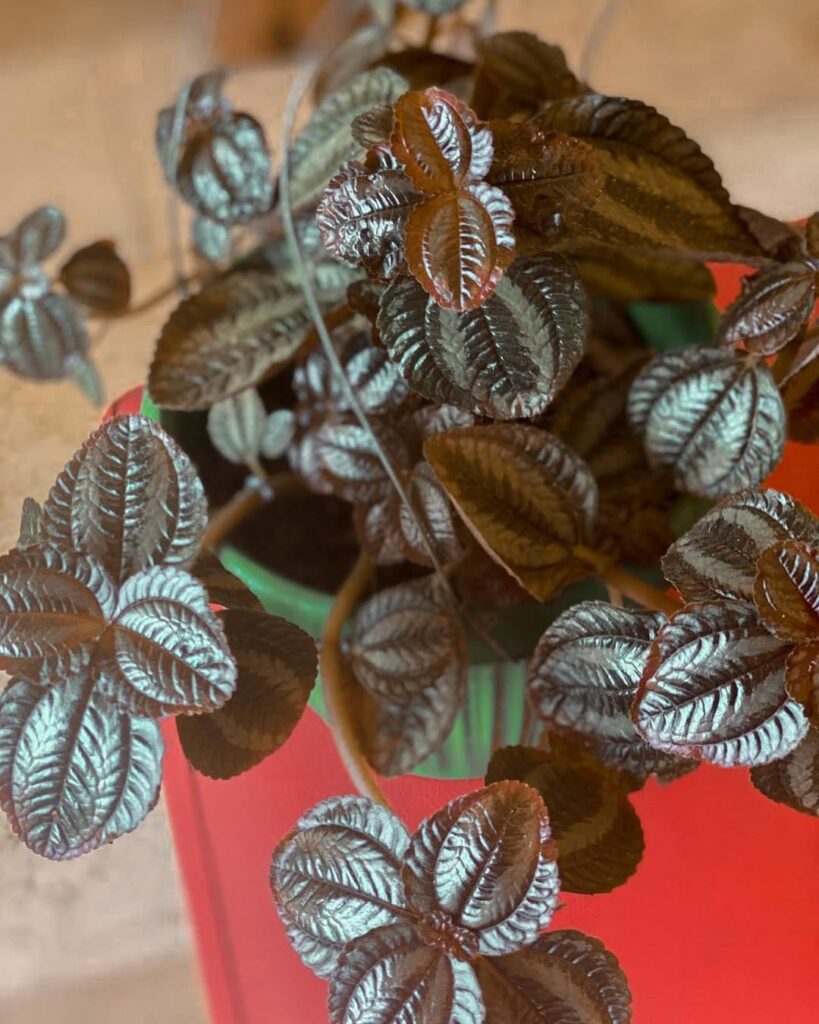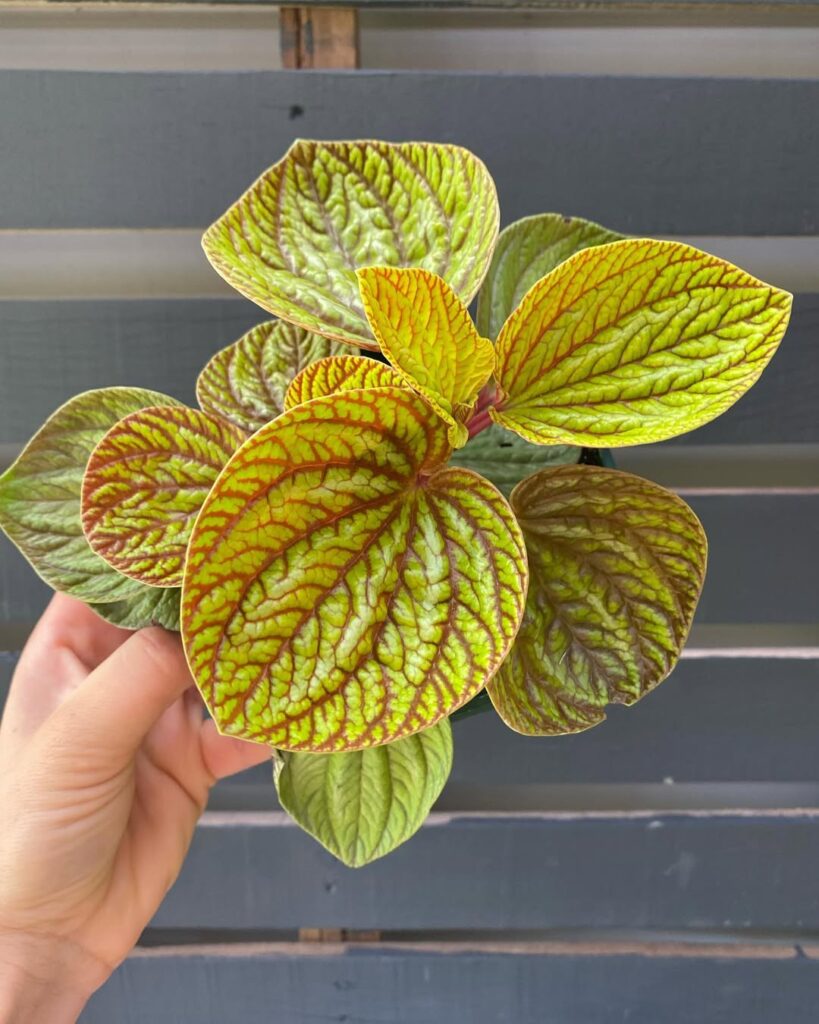You’ll discover peperomia varieties offer some of the most striking indoor foliage plants, from the watermelon-striped leaves of Peperomia argyreia to the tiny, turtle-shell patterns of Peperomia prostrata. While these compact beauties typically grow just 6-12 inches tall, they pack remarkable diversity in leaf shapes, colors, and textures. Let’s explore the most enchanting varieties that’ll transform your windowsills and plant shelves.
1. Peperomia argyreia
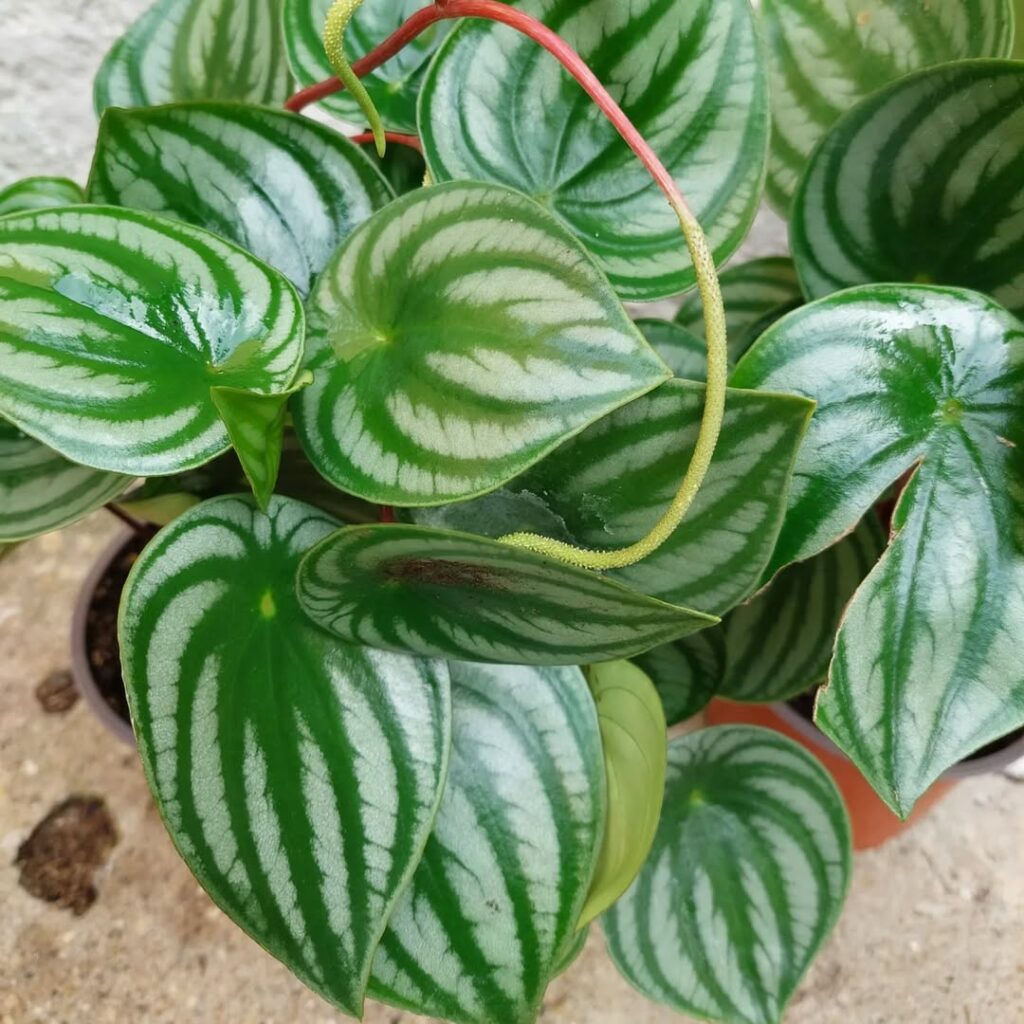
Also known as Watermelon Peperomia, this species features round, fleshy leaves with striking silver stripes that mimic the rind of a watermelon. The leaves are attached to red stems, creating a vibrant contrast. It thrives in bright, indirect light and prefers moderate humidity, making it an excellent choice for indoor spaces. This compact plant grows up to 8 inches tall and is prized for its ornamental foliage rather than its flowers.
2. Peperomia caperata
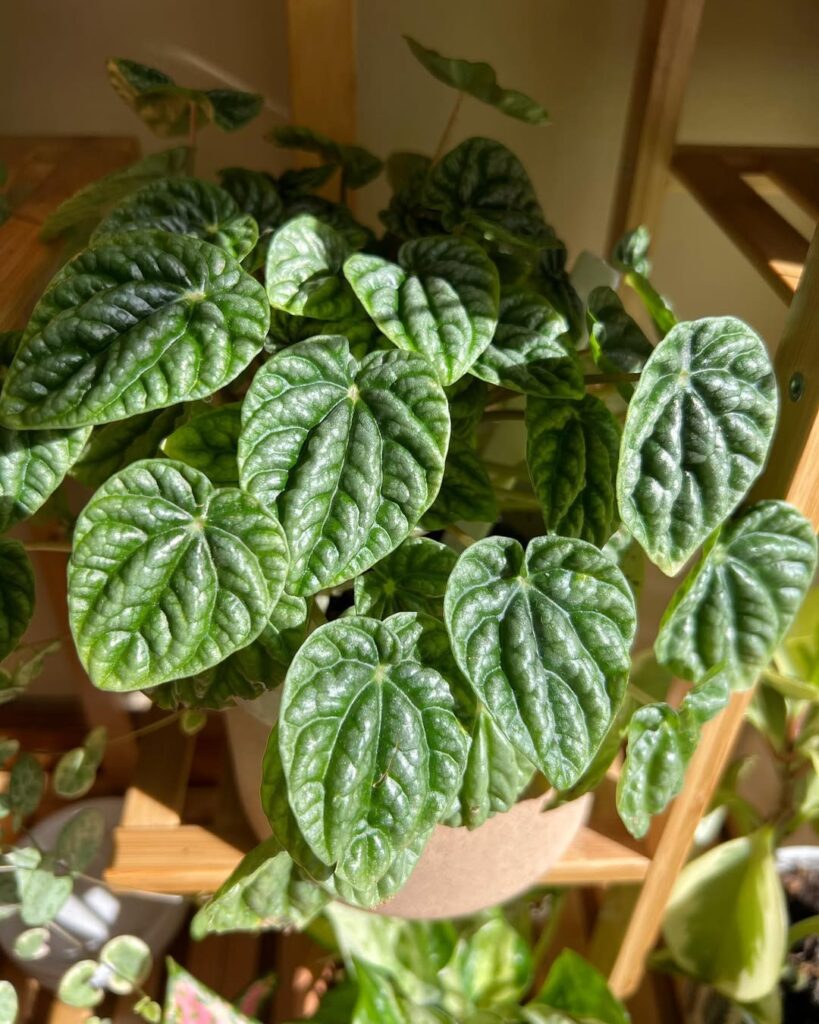
Peperomia caperata is a mound-forming perennial with deeply ridged, heart-shaped leaves that come in shades of green, burgundy, or silver. The crinkled texture adds visual interest, making it a favorite among houseplant enthusiasts. It produces narrow spikes of white flowers in summer, though its foliage remains the main attraction. This variety prefers well-draining soil and thrives in medium to bright indirect light.
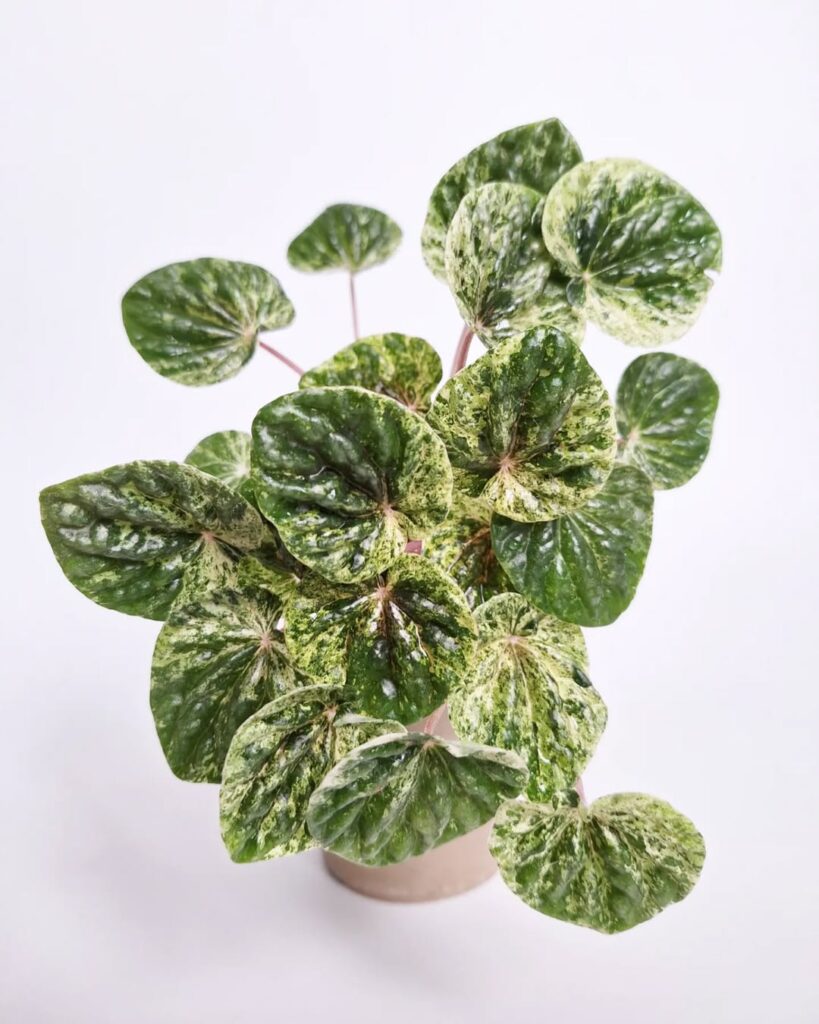 Peperomia caperata variegata
Peperomia caperata variegata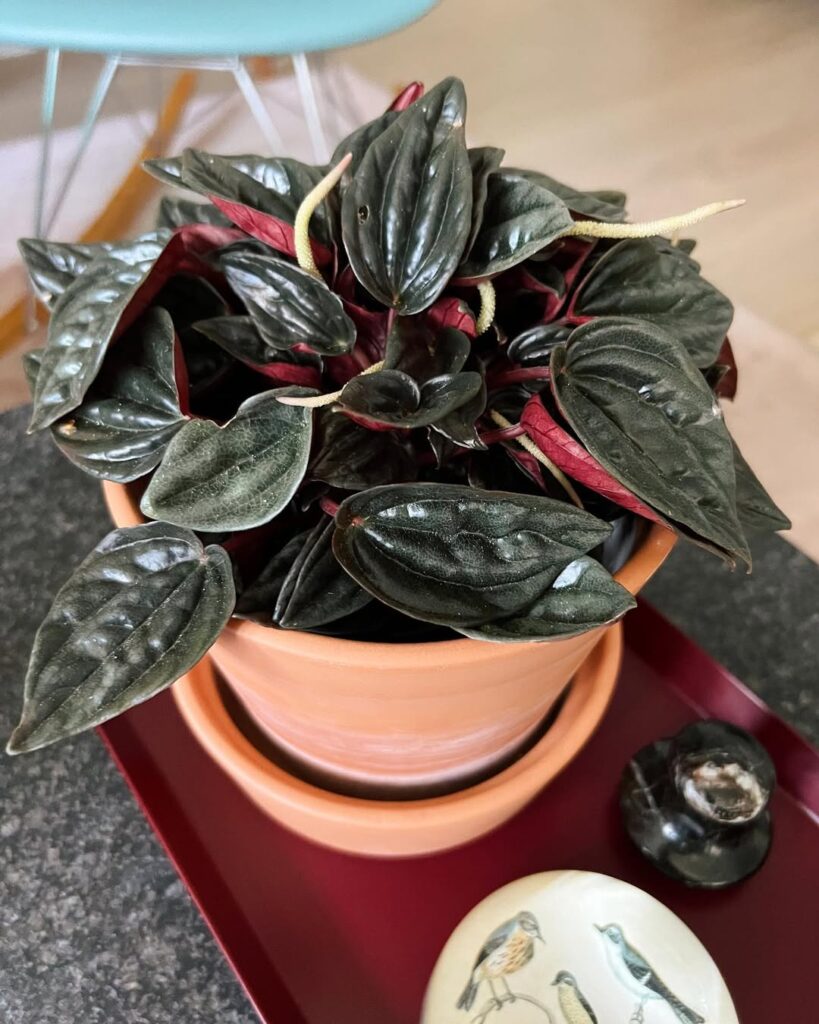 Peperomia caperata ‘Brasilia’
Peperomia caperata ‘Brasilia’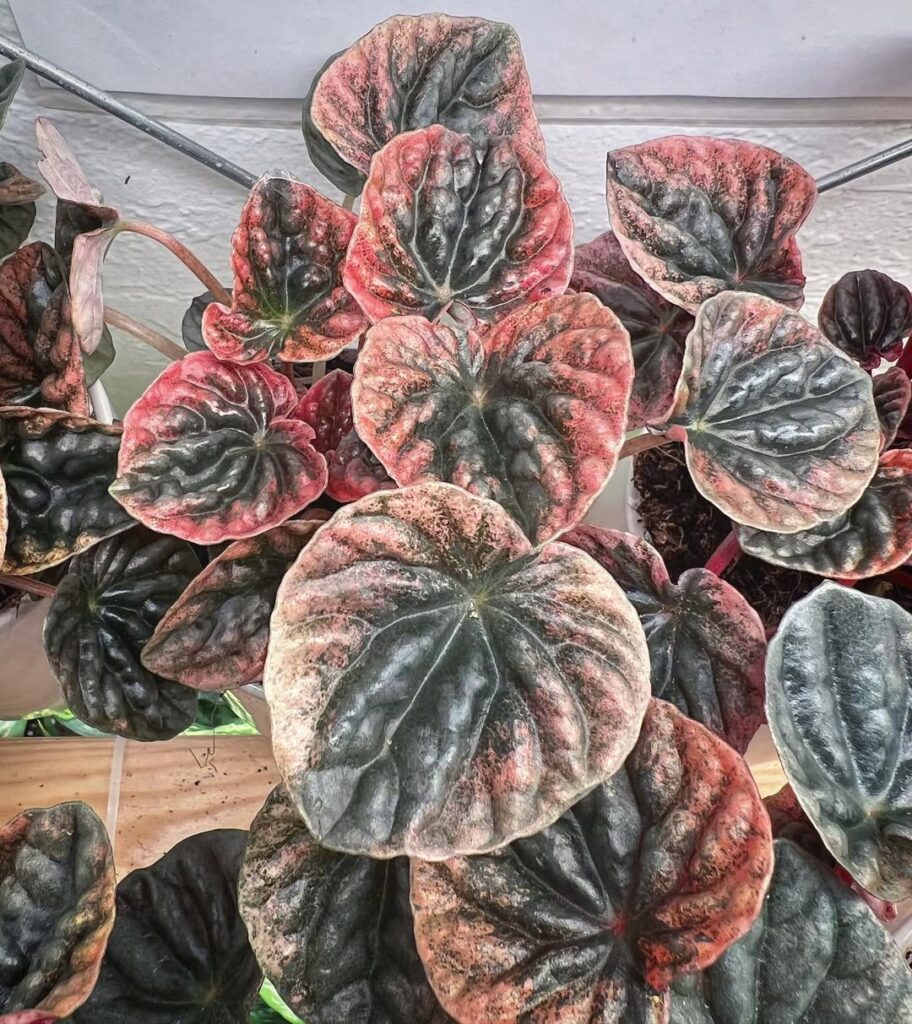 Peperomia caperata ‘Abricos’
Peperomia caperata ‘Abricos’ Peperomia caperata ‘Burbella’
Peperomia caperata ‘Burbella’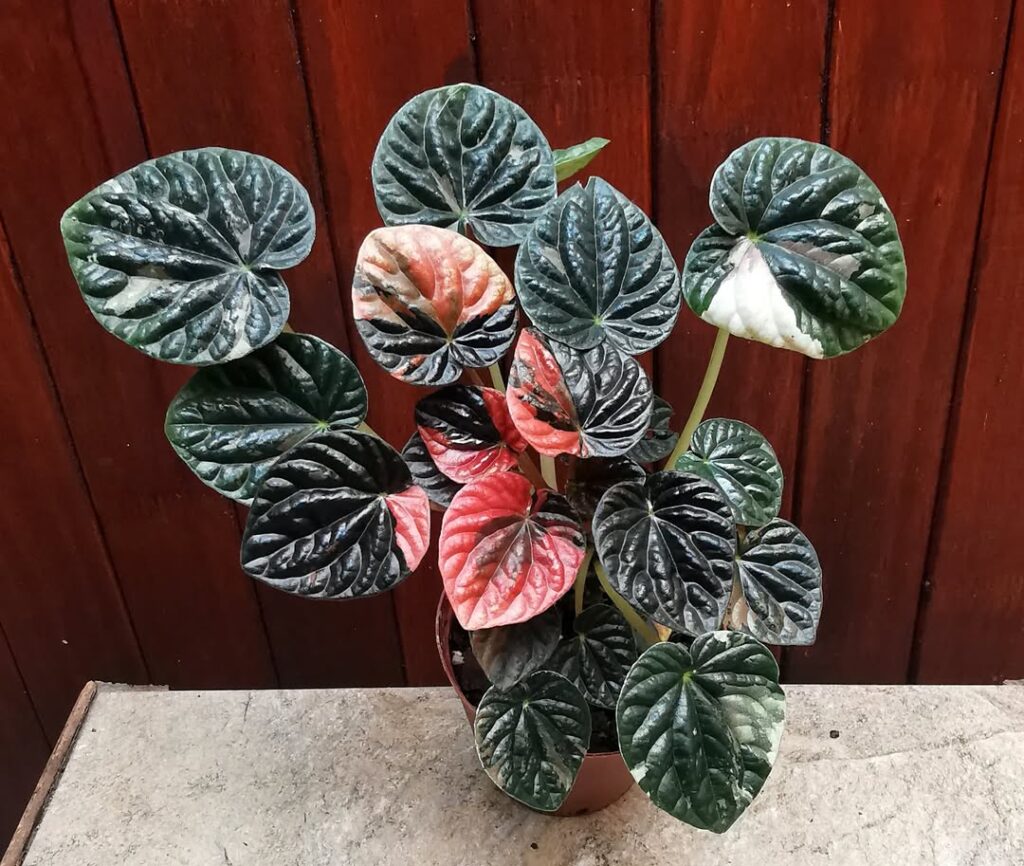 Peperomia caperata ‘Black Ripple’
Peperomia caperata ‘Black Ripple’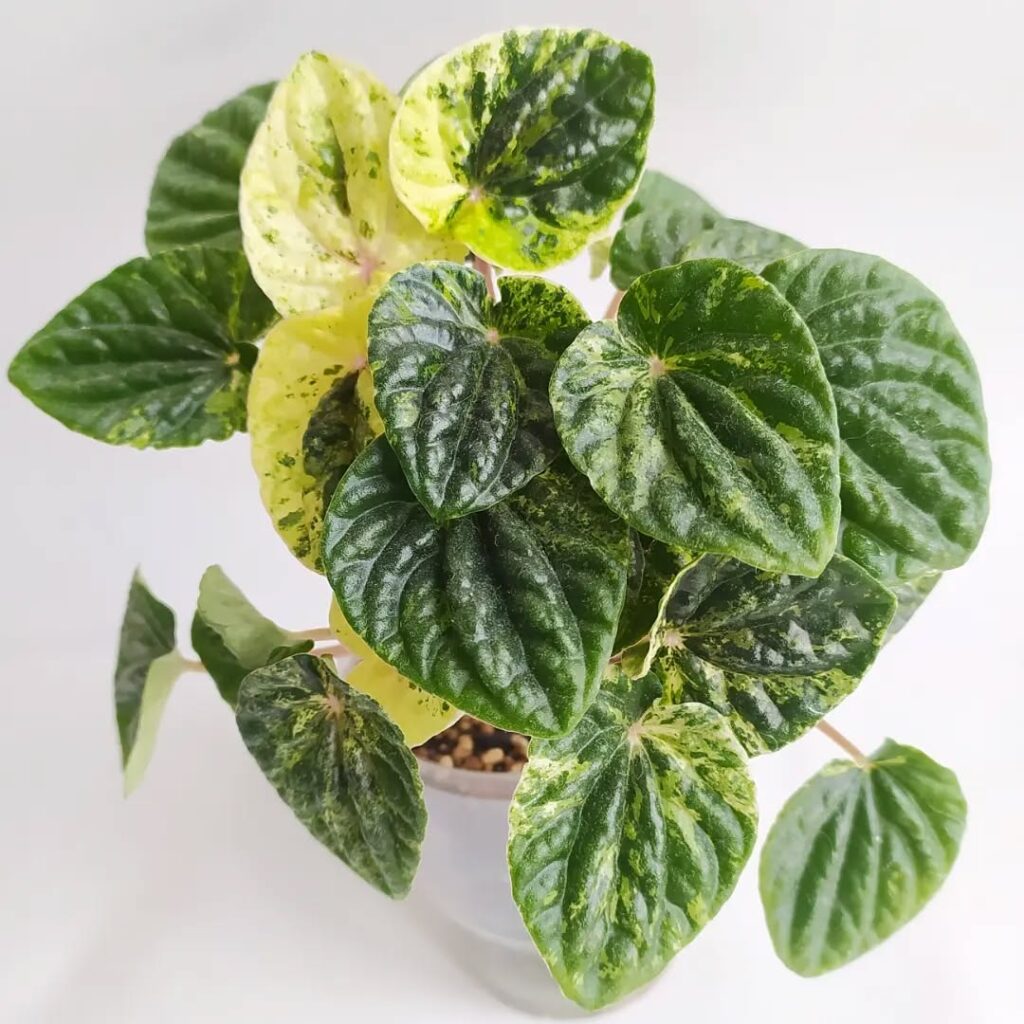 Peperomia caperata ‘White Lady’
Peperomia caperata ‘White Lady’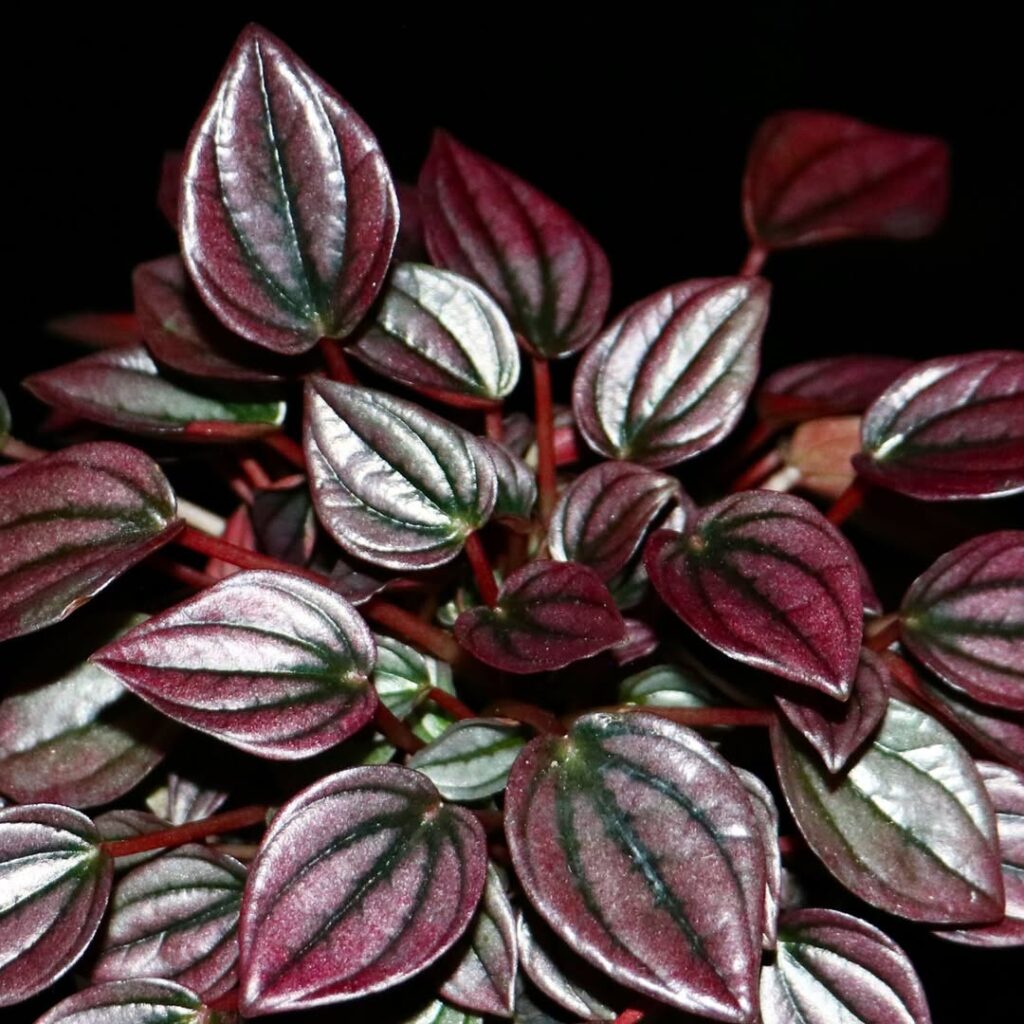 Peperomia caperata ‘Cayenne’
Peperomia caperata ‘Cayenne’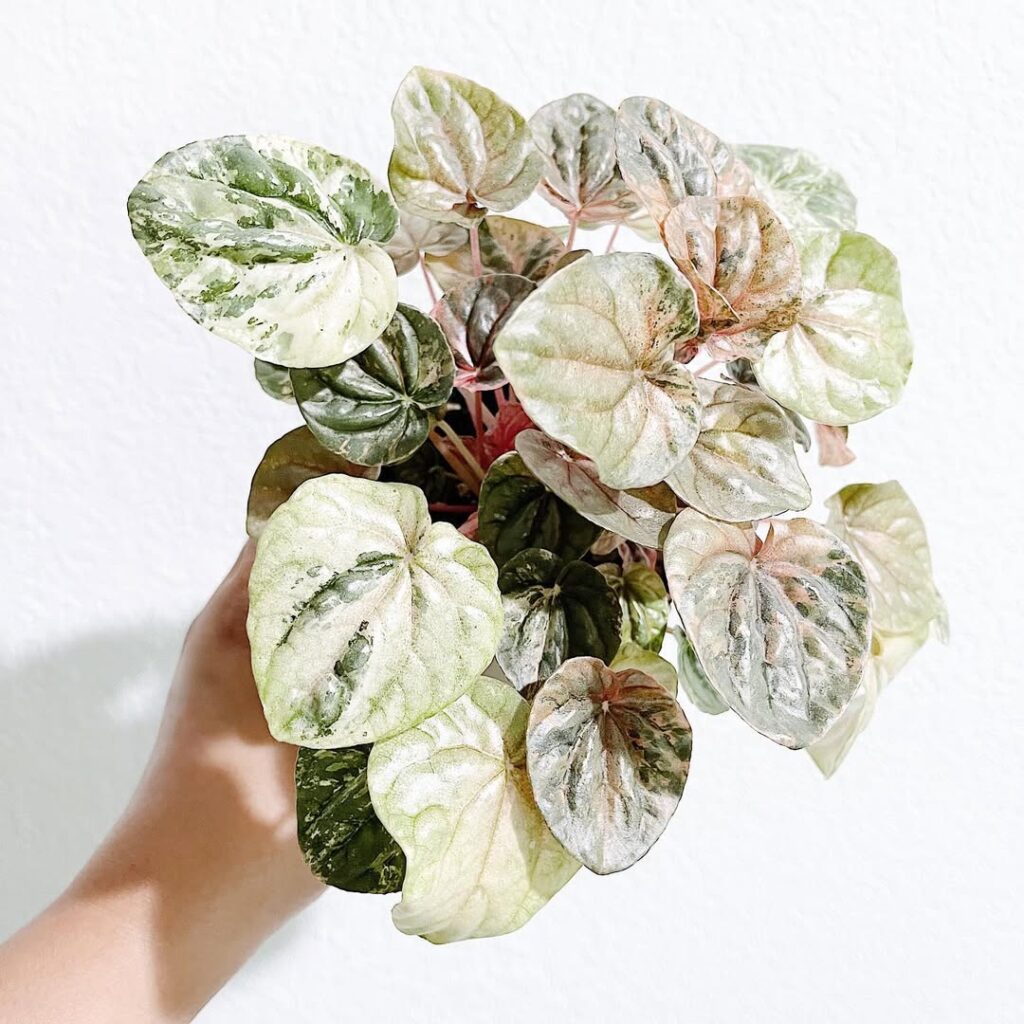 Peperomia Caperata ‘Pink Lady’
Peperomia Caperata ‘Pink Lady’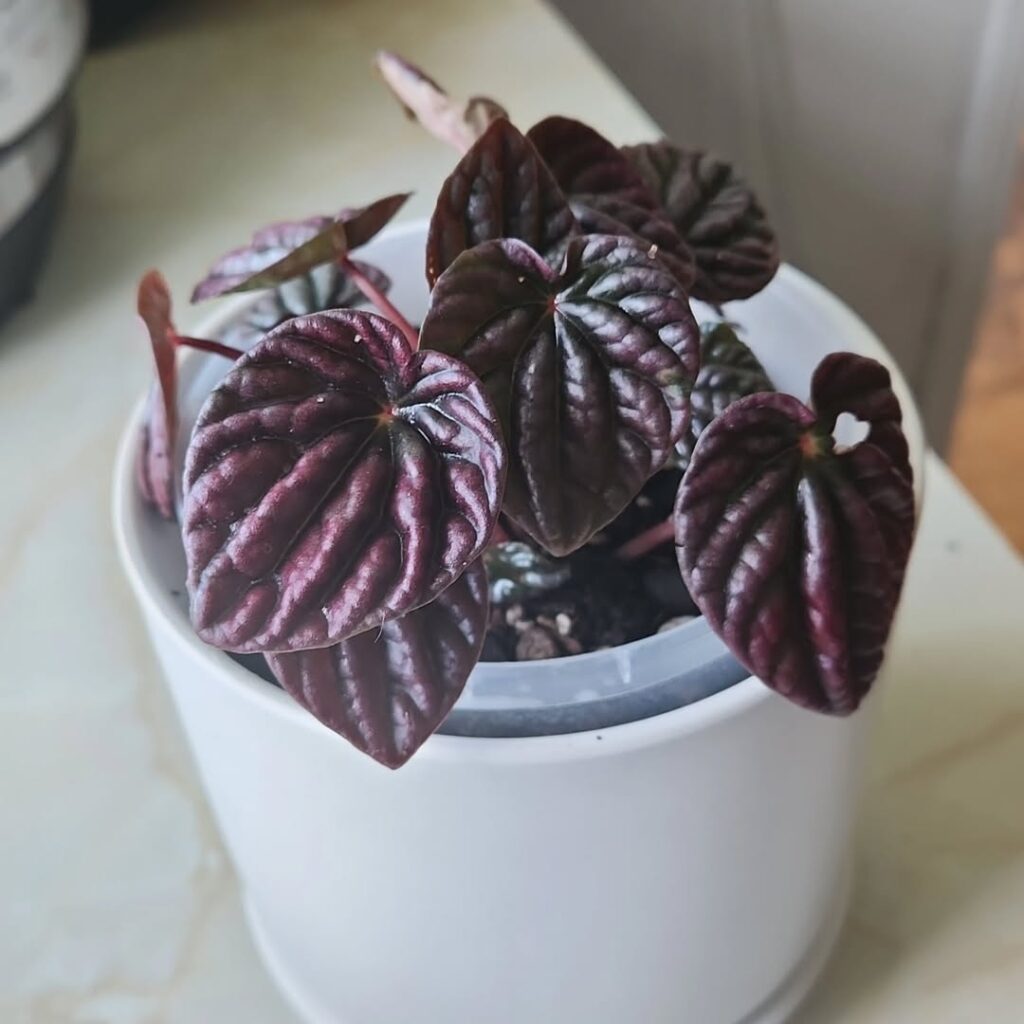 Peperomia Caperata ‘Raspberry Ripple’
Peperomia Caperata ‘Raspberry Ripple’
3. Peperomia obtusifolia
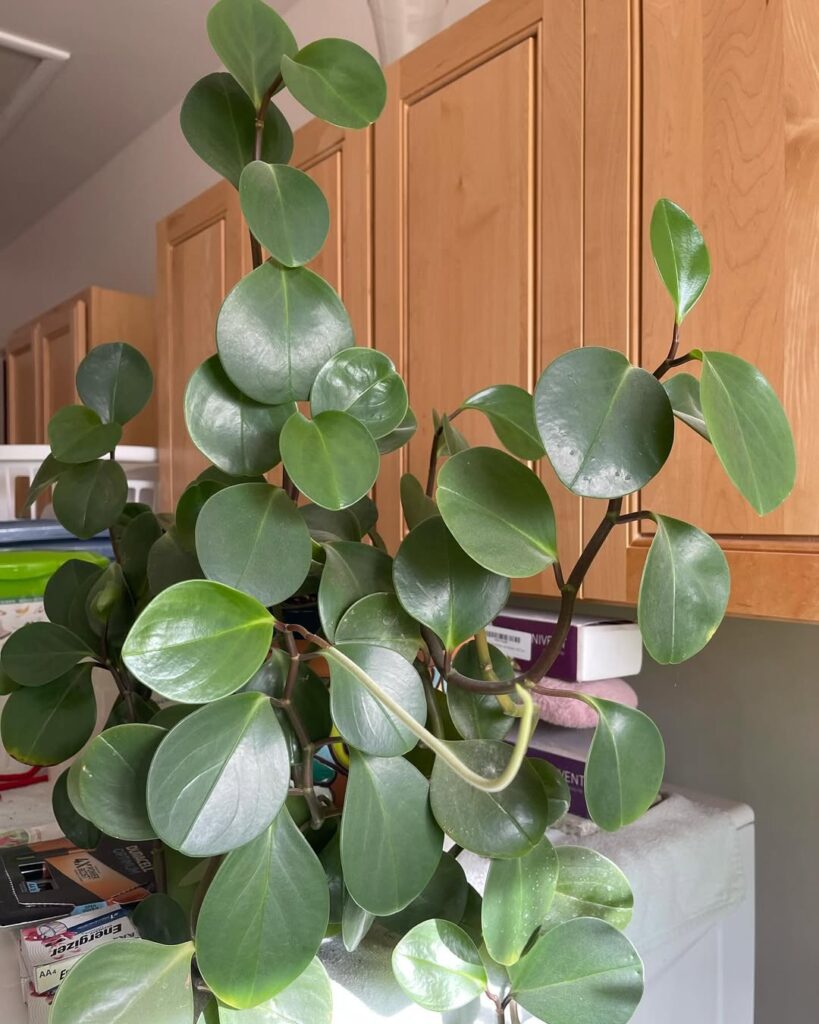
Commonly called Baby Rubber Plant, this species has thick, glossy, oval-shaped leaves that store water, making it drought-tolerant. It is highly adaptable to indoor conditions and can thrive in low to bright indirect light. The plant grows in a compact, bushy form and is available in both solid green and variegated varieties. It is an excellent choice for beginners due to its resilience and ease of care.
 Peperomia obtusifolia variegata
Peperomia obtusifolia variegata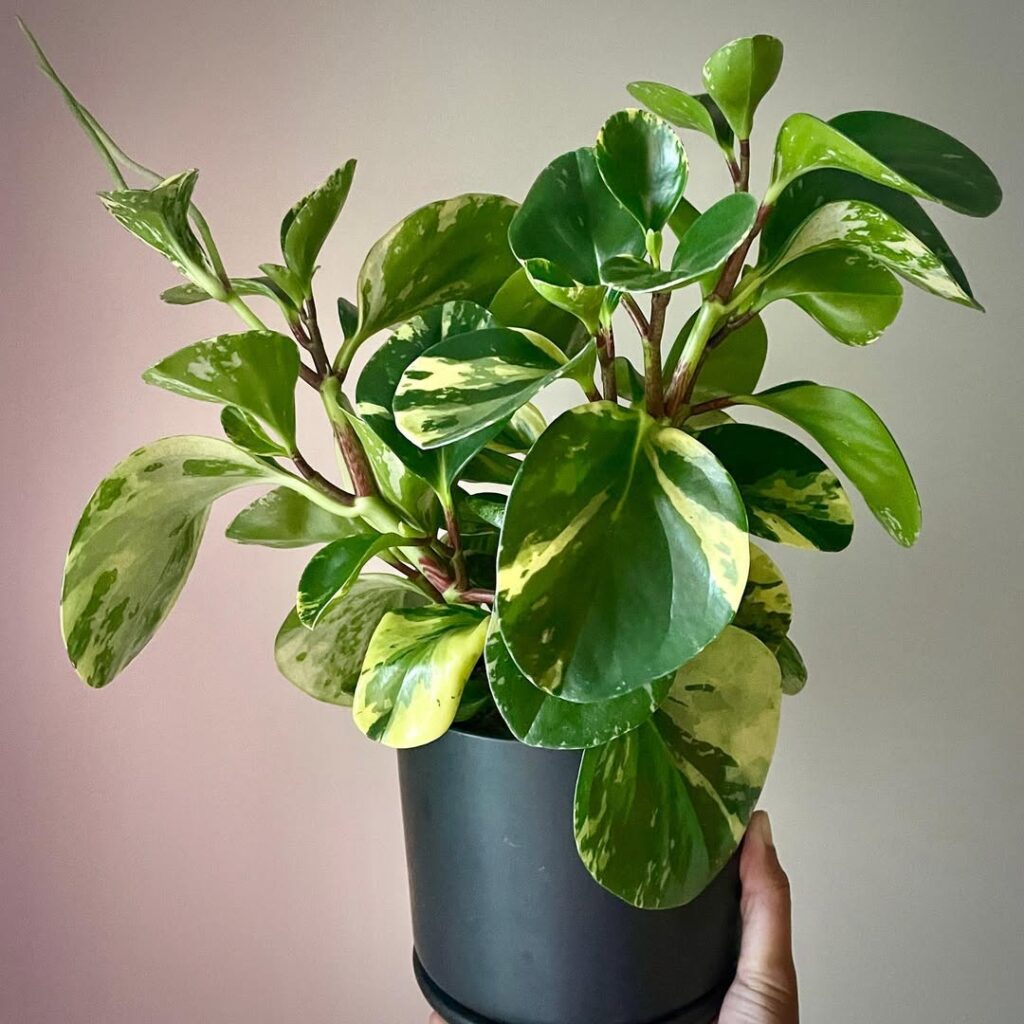 Peperomia obtusifolia ‘Marble’
Peperomia obtusifolia ‘Marble’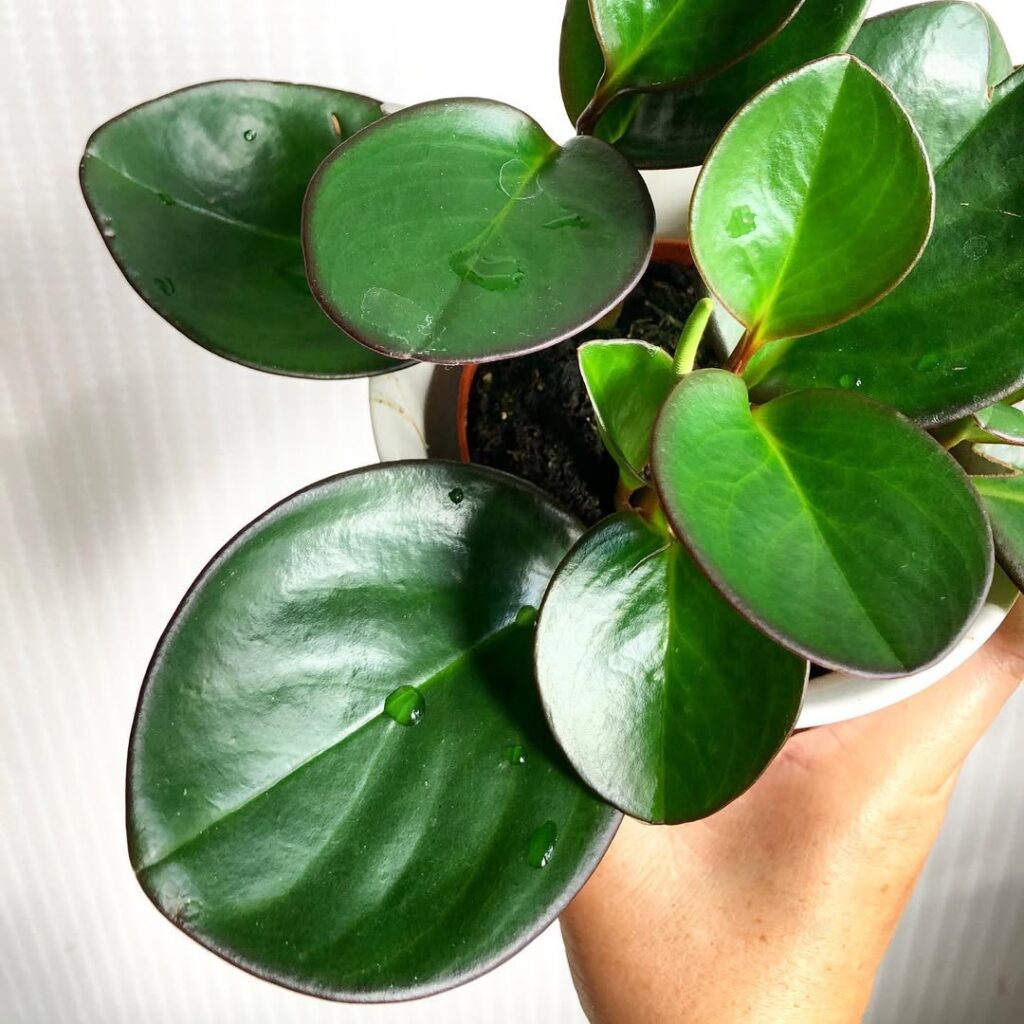 Peperomia obtusifolia ‘Red Margin’
Peperomia obtusifolia ‘Red Margin’
4. Peperomia polybotrya
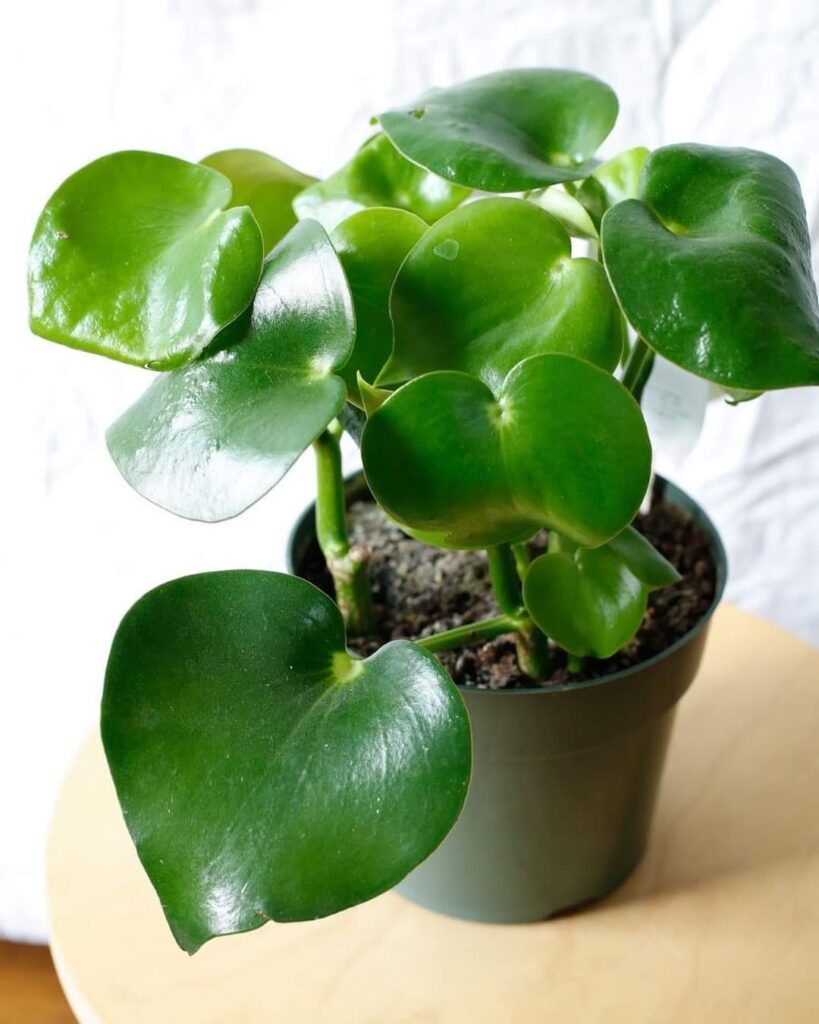
Raindrop Peperomia is named for its large, succulent-like leaves shaped like teardrops. The glossy, heart-shaped foliage adds a lush look to any space, making it a popular choice for indoor gardens. It prefers bright, indirect light and moderate watering, as its thick leaves store moisture. This variety is often mistaken for the Chinese Money Plant (Pilea peperomioides) due to its similar leaf shape.
 Peperomia polybotrya variegated
Peperomia polybotrya variegated
5. Peperomia prostrata
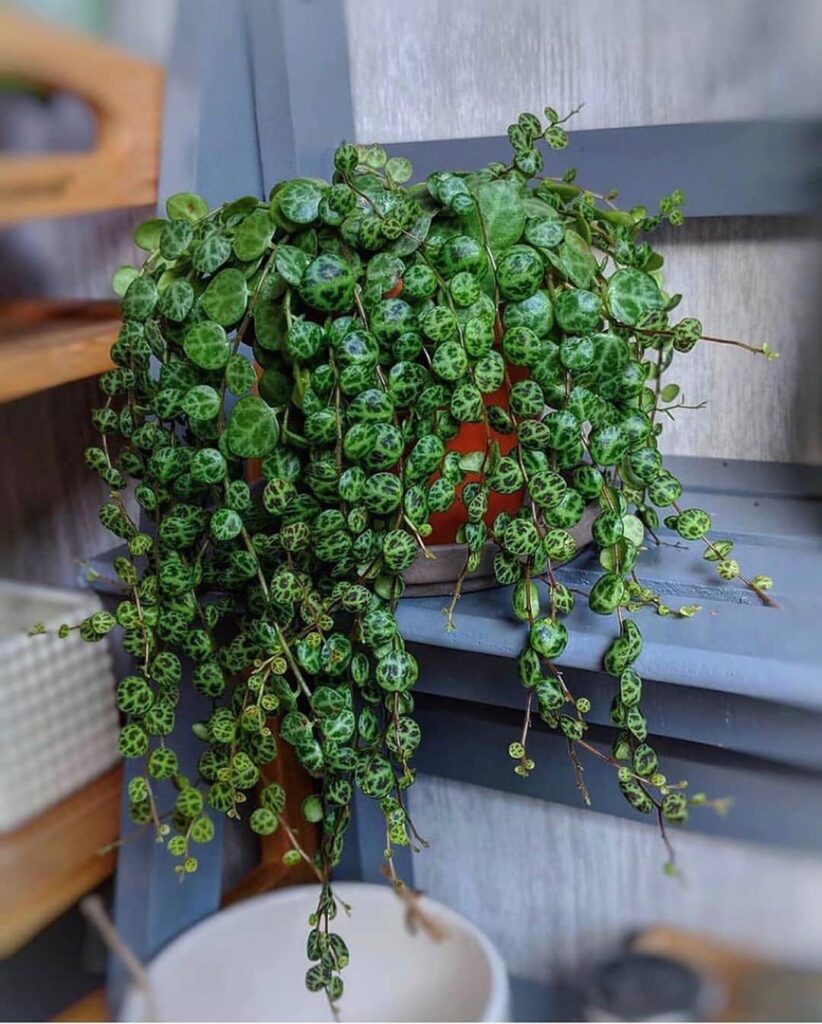
String of Turtles is a trailing variety with small, round leaves patterned like turtle shells. The intricate veining on the leaves gives it a unique appearance, making it a favorite for hanging baskets and terrariums. It thrives in bright, indirect light and requires well-draining soil to prevent root rot. Its slow-growing nature makes it ideal for compact spaces.
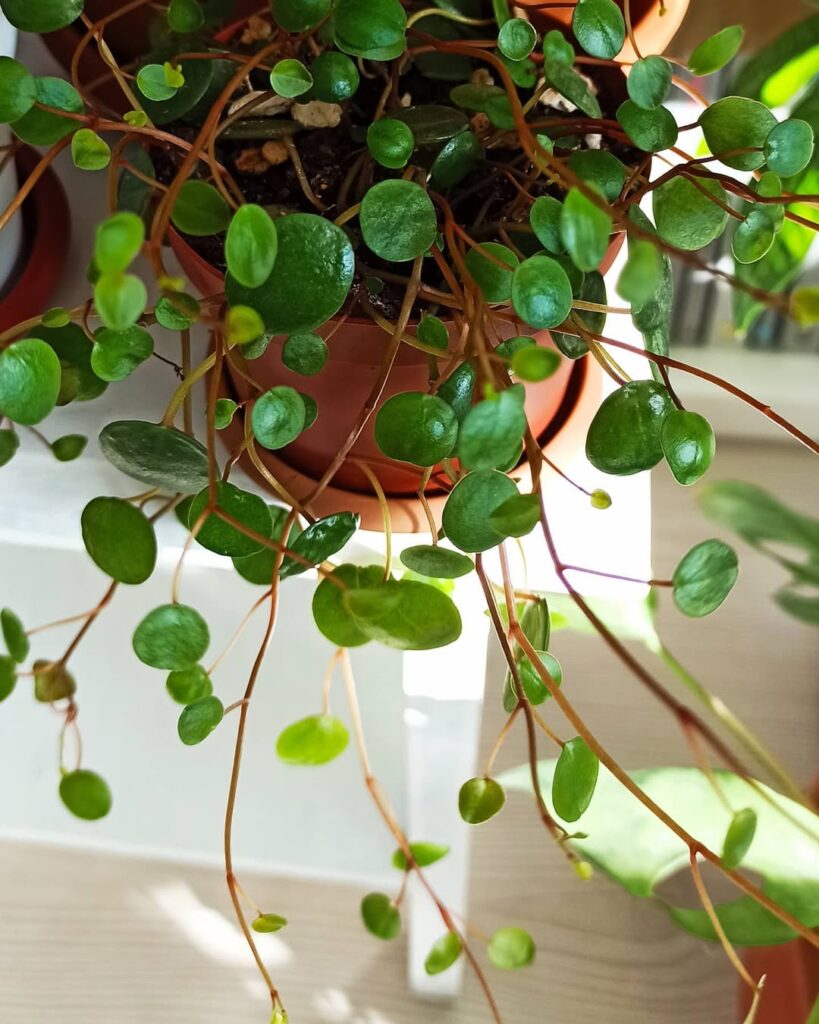 Peperomia prostrata ‘Pepperspot’
Peperomia prostrata ‘Pepperspot’
6. Peperomia clusiifolia
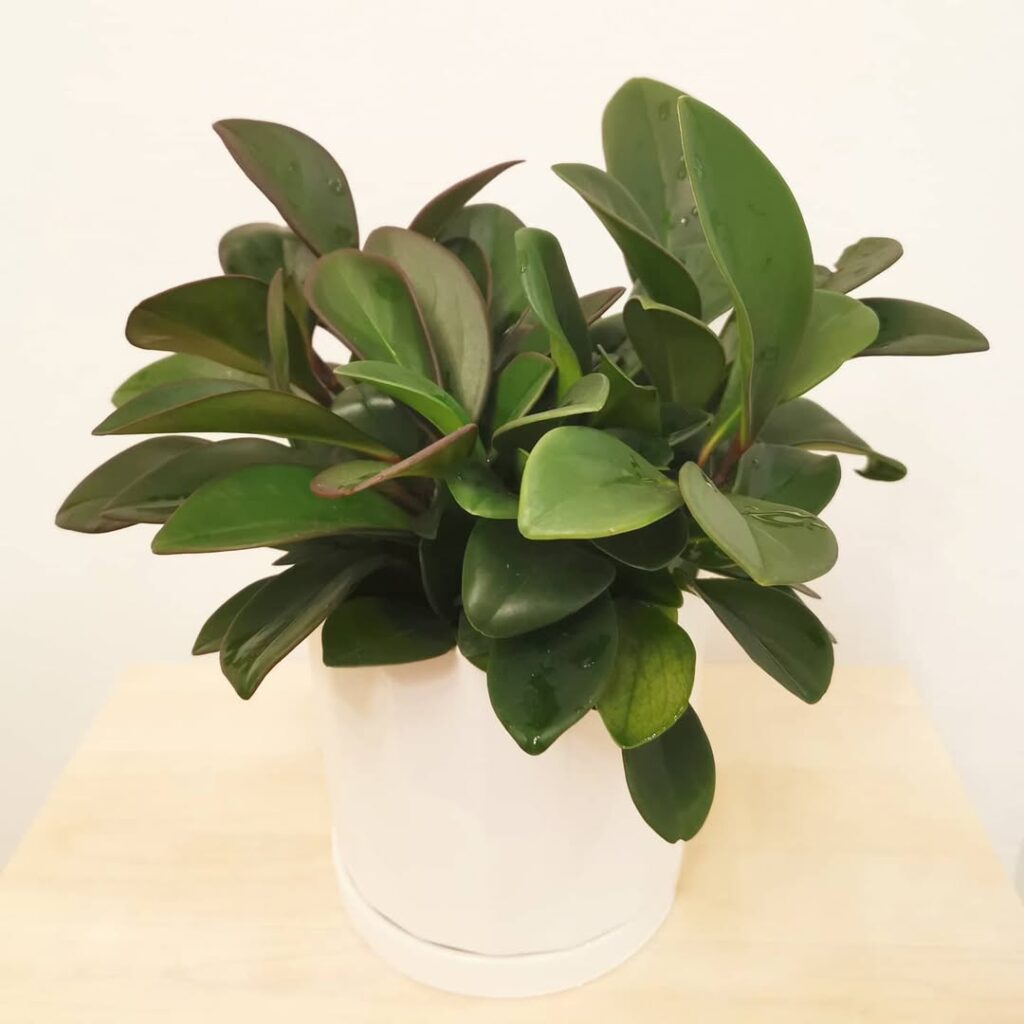
Also known as Red Edge Peperomia, this variety features thick, waxy leaves with a striking red or pink margin. Some cultivars, such as ‘Jellie’ and ‘Tricolor,’ display vibrant variegation with shades of green, cream, and pink. It thrives in bright, indirect light and prefers well-draining soil to prevent root rot. This semi-succulent plant stores water in its leaves, making it relatively drought-tolerant and easy to care for.
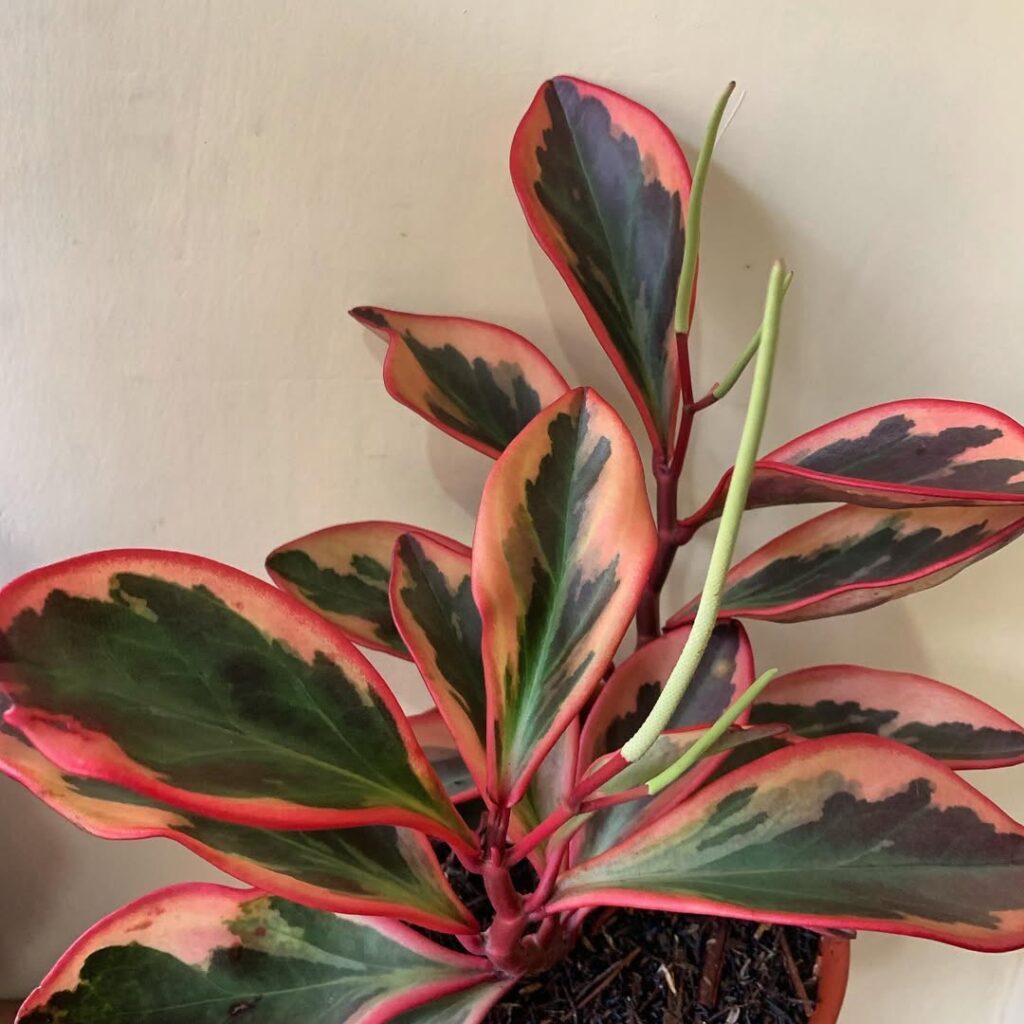 Peperomia clusiifolia ‘Jellie’
Peperomia clusiifolia ‘Jellie’
7. Peperomia scandens
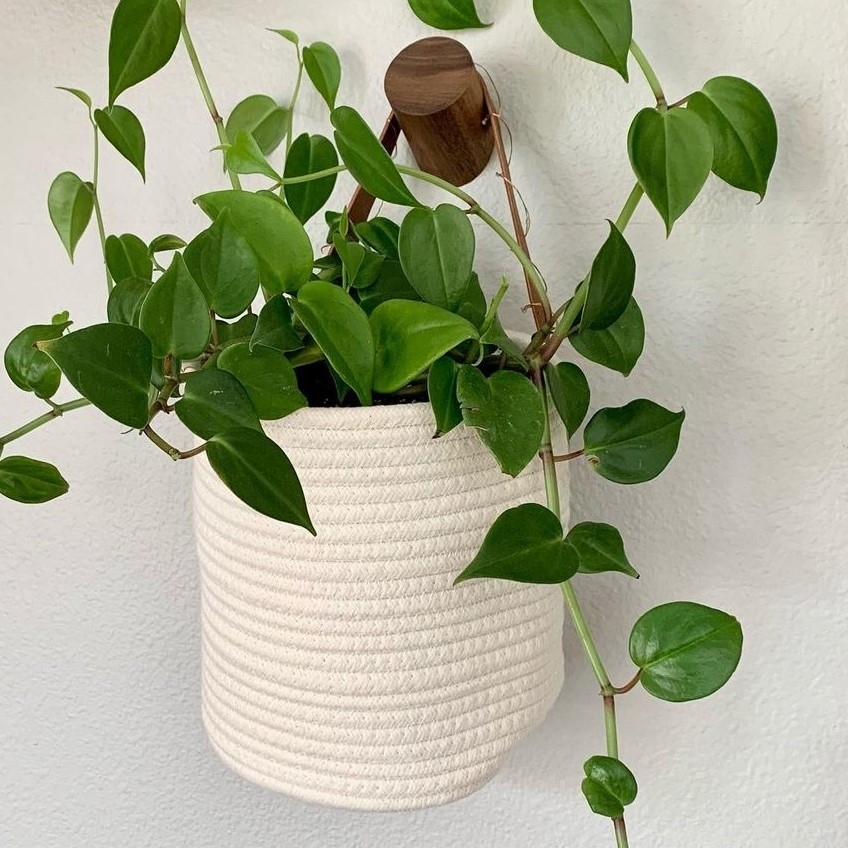
Also called Cupid Peperomia, this vining houseplant has heart-shaped, glossy green leaves that grow along pinkish stems. Native to Mexico and South America, it thrives in bright, indirect light and can grow up to 5 feet long. Its semi-succulent nature allows it to store water, making it relatively drought-tolerant. This variety is perfect for hanging baskets or as a trailing accent in mixed planters.
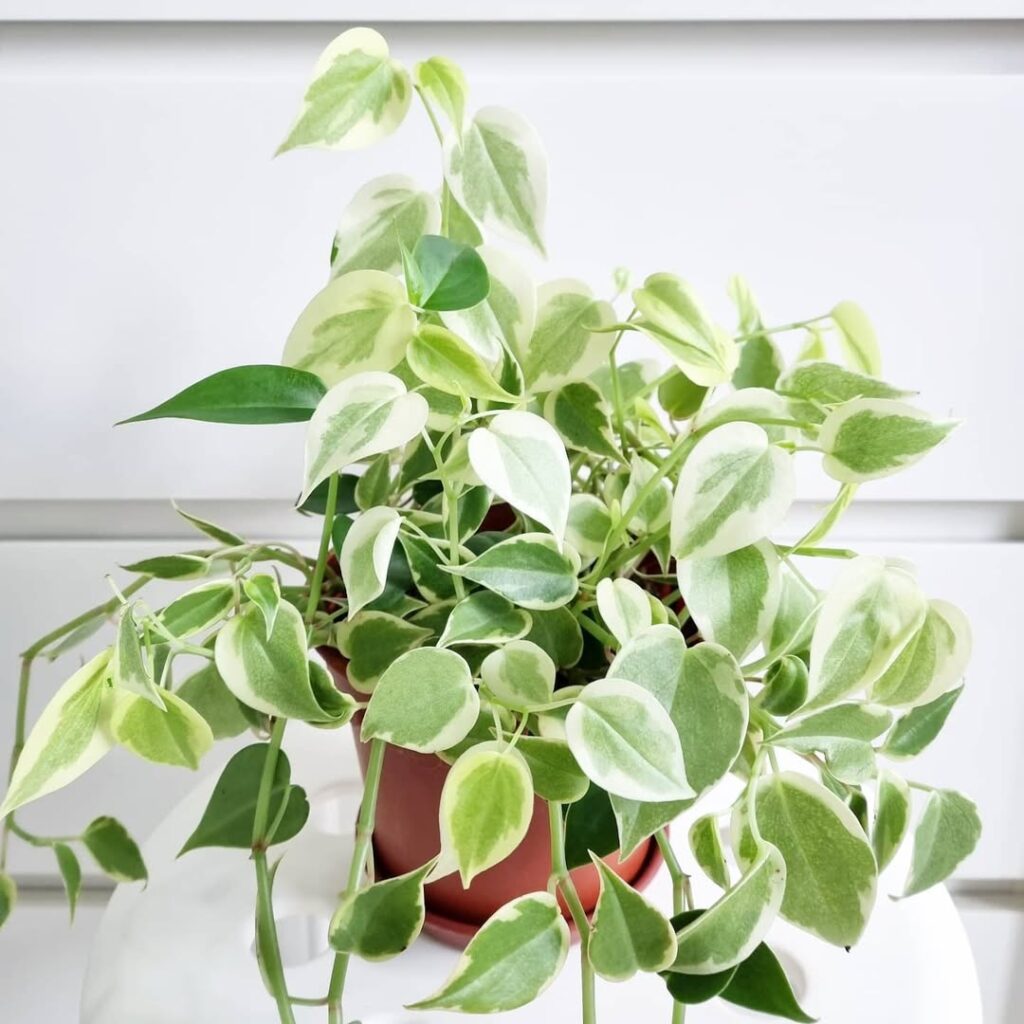 Peperomia scandens variegata
Peperomia scandens variegata
8. Peperomia hoffmanii
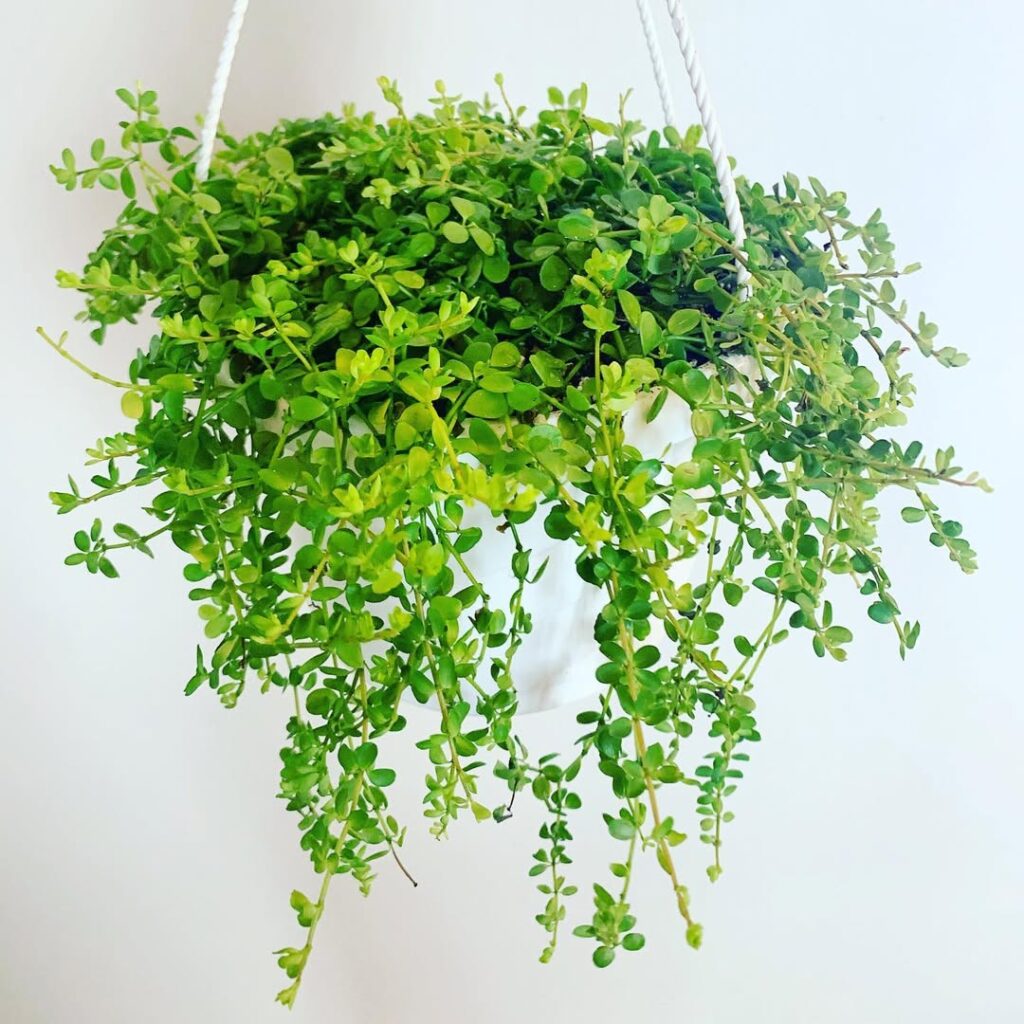
This compact, trailing species features tiny, elongated green leaves that shimmer under the right lighting conditions. Native to Central and South America, it thrives in bright, indirect sunlight and prefers a humid environment. Its delicate foliage makes it ideal for terrariums or small pots. Despite its fragile appearance, it is relatively easy to care for, requiring well-draining soil and occasional watering.
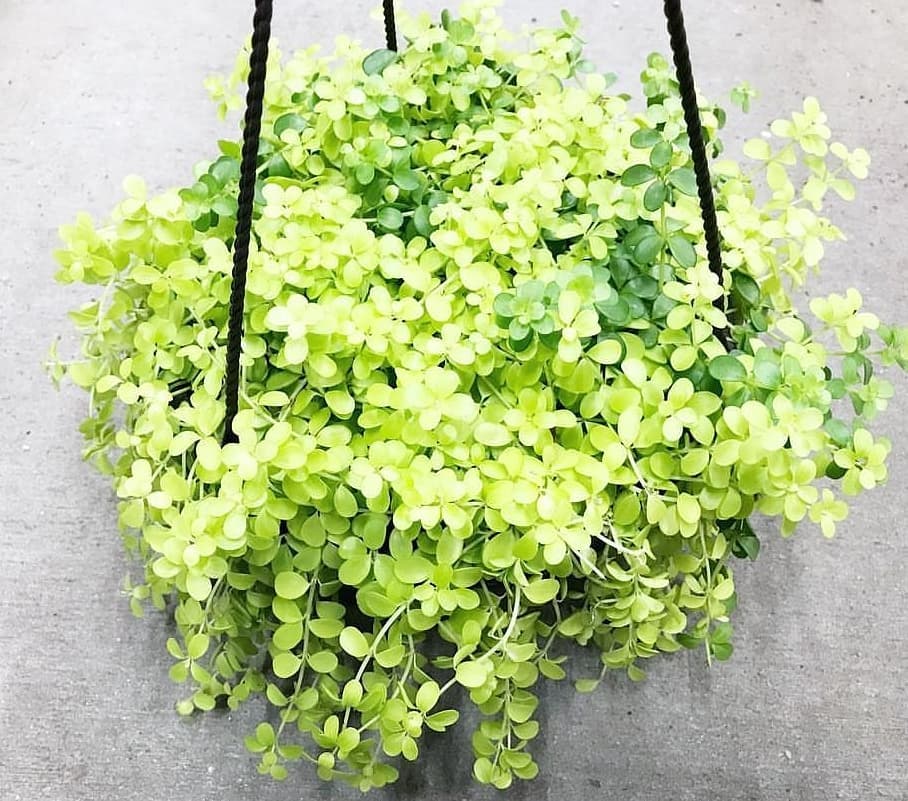 Peperomia hoffmanii ‘Gold’
Peperomia hoffmanii ‘Gold’
9. Peperomia perciliata
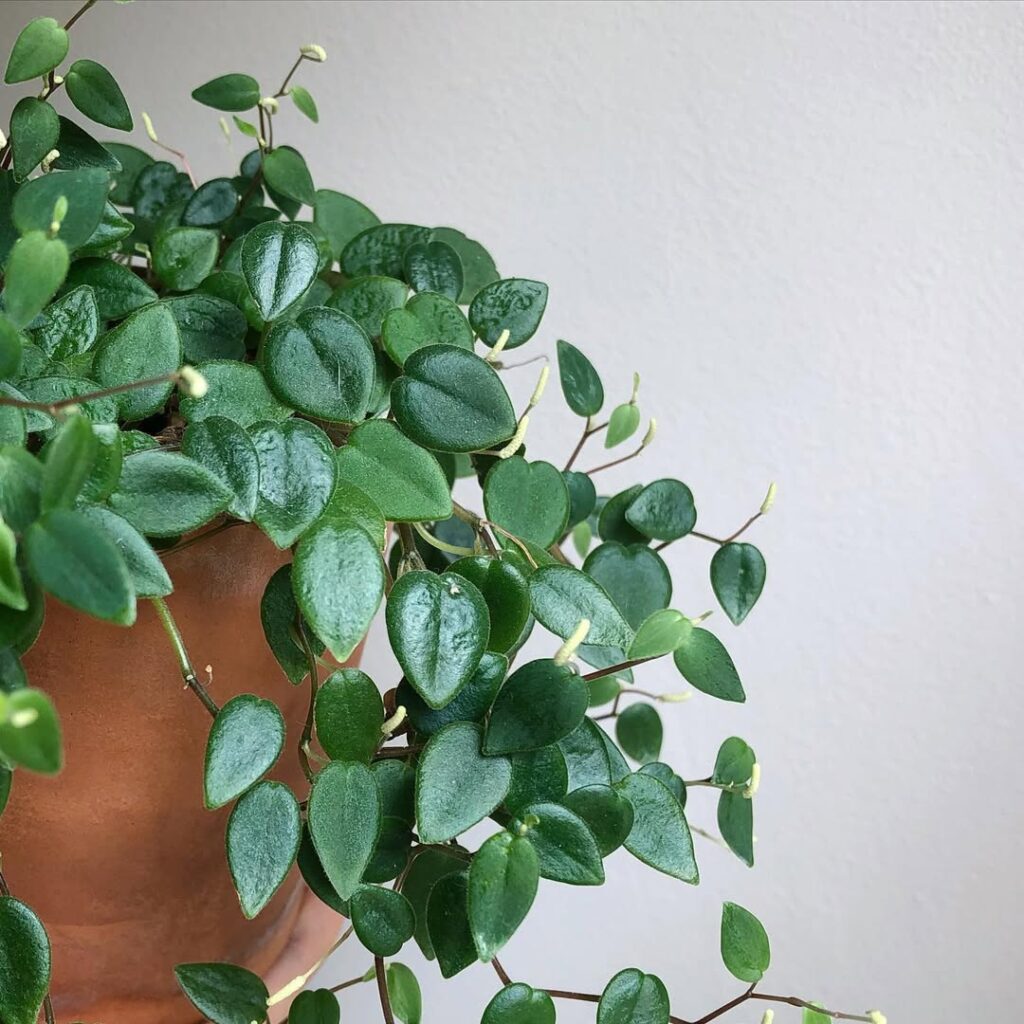
A rare and endangered species native to Panama, Peperomia perciliata is prized for its tiny, heart-shaped leaves and reddish-pink stems. It is a fast-growing, trailing plant that does well in moist, well-draining soil and bright, indirect light. Its compact size makes it perfect for terrariums or as an underplant in larger containers. This variety is drought-tolerant and thrives in humid environments.
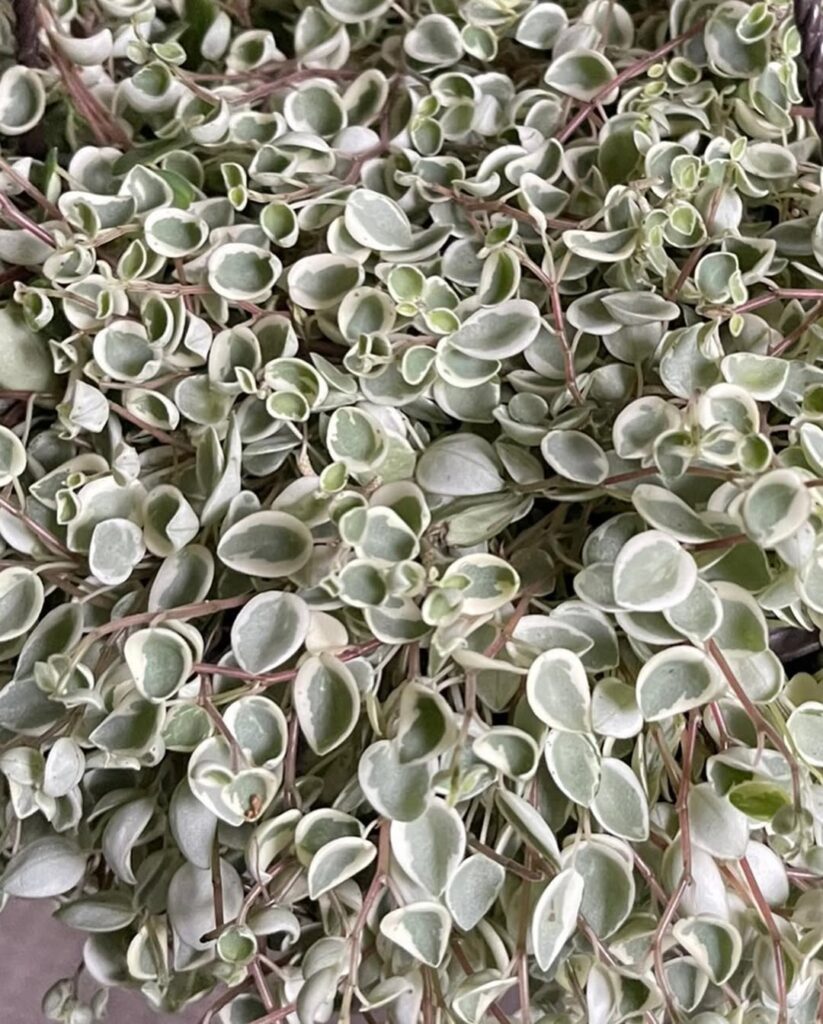 Peperomia perciliata ‘White Cloud’
Peperomia perciliata ‘White Cloud’
10. Peperomia serpens
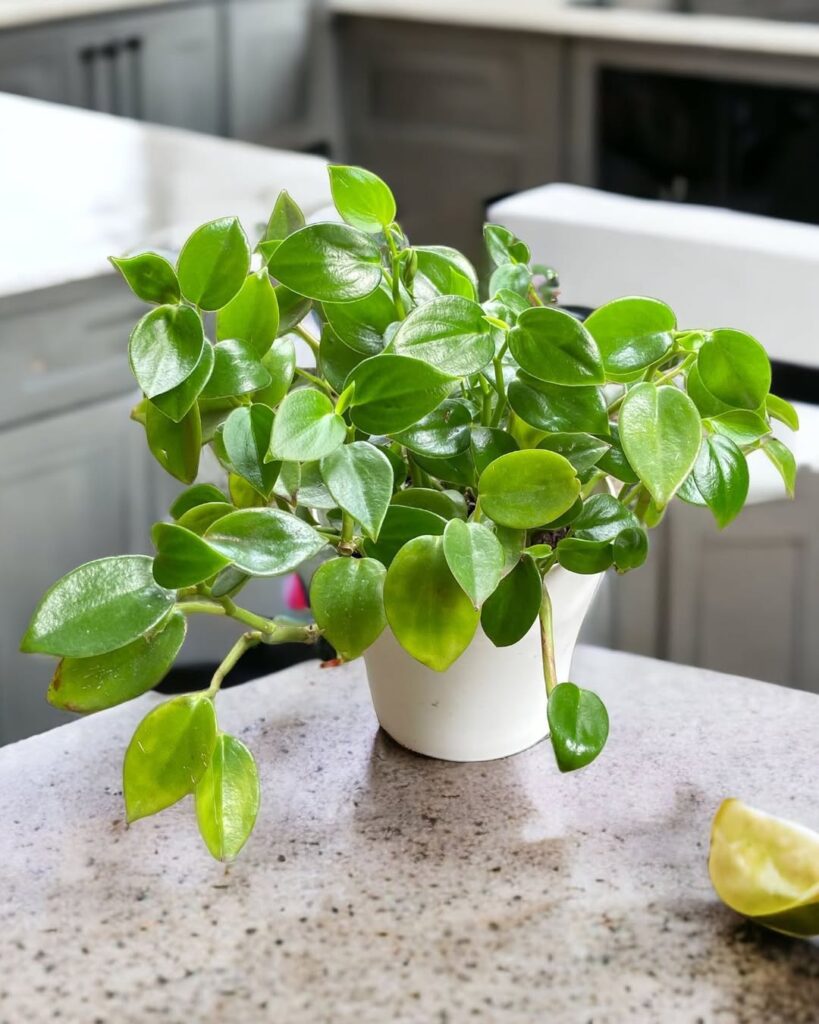
Also known as Vining Peperomia, this species has small, glossy, heart-shaped leaves that grow on trailing stems. It is often confused with Peperomia scandens due to its similar growth habit. Native to tropical regions, it thrives in bright, indirect light and requires moderate humidity to flourish. It is an excellent choice for hanging baskets or as a ground cover in indoor gardens.
11. Peperomia rubella
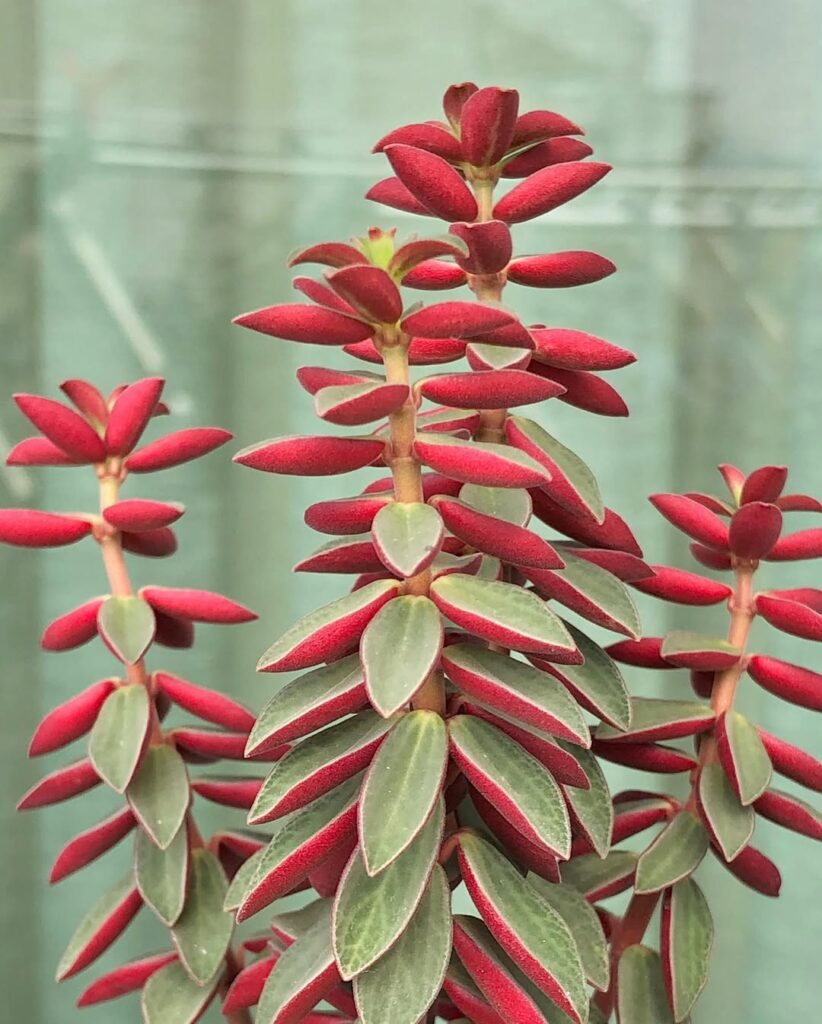
A small, trailing plant with fleshy, elliptical leaves arranged in clusters of four. The undersides of the leaves are scarlet red, creating a striking contrast against the green tops. It grows upright until about 4 inches tall before cascading as a vine. In summer, it produces greenish-white flower spikes, though its foliage remains the primary attraction.
12. Peperomia maculosa
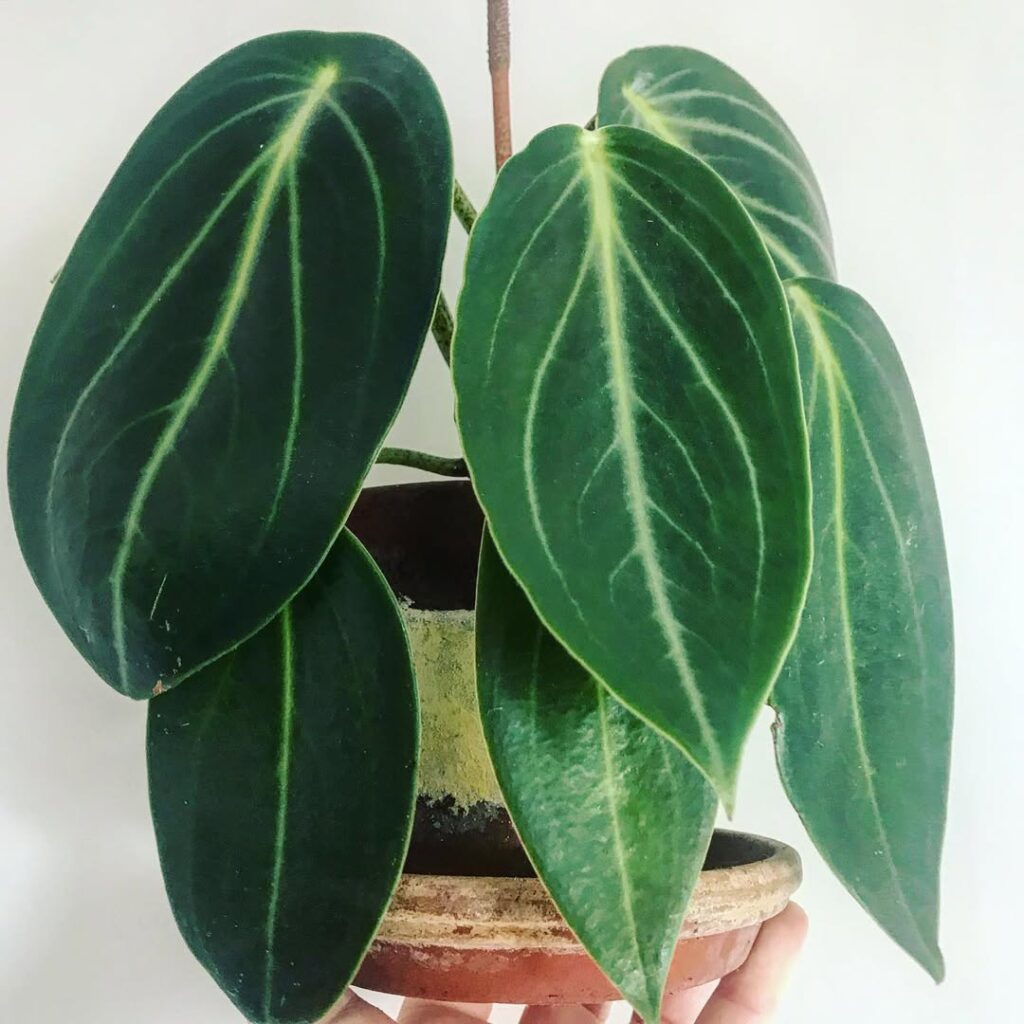
This large-leaved variety features glossy, dark green foliage with prominent white veins. The leaves can grow up to 15 cm long, making it one of the more visually striking Peperomia species. It thrives in bright, indirect light and prefers well-draining soil to prevent root rot. Its thick petioles and purplish flower spikes add to its ornamental appeal.
13. Peperomia ferreyrae
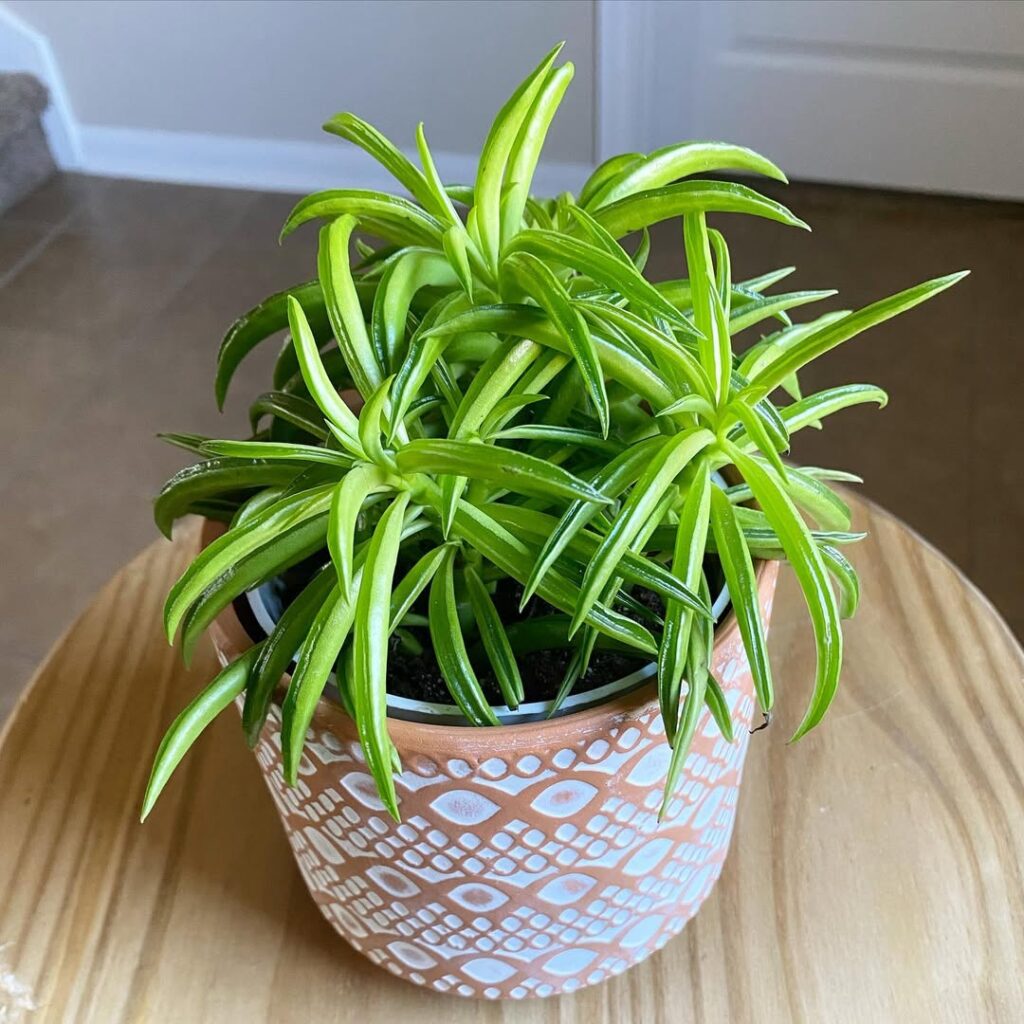
Commonly called Happy Bean Peperomia, this variety has bright green, bean-like leaves with translucent windows along the upper surface. It is a small succulent shrub that grows upright, reaching about 12 inches tall. Native to Peru, it thrives in dry environments and requires minimal watering. Though it produces tiny flowers, its unique foliage is the main attraction.
14. Peperomia nivalis
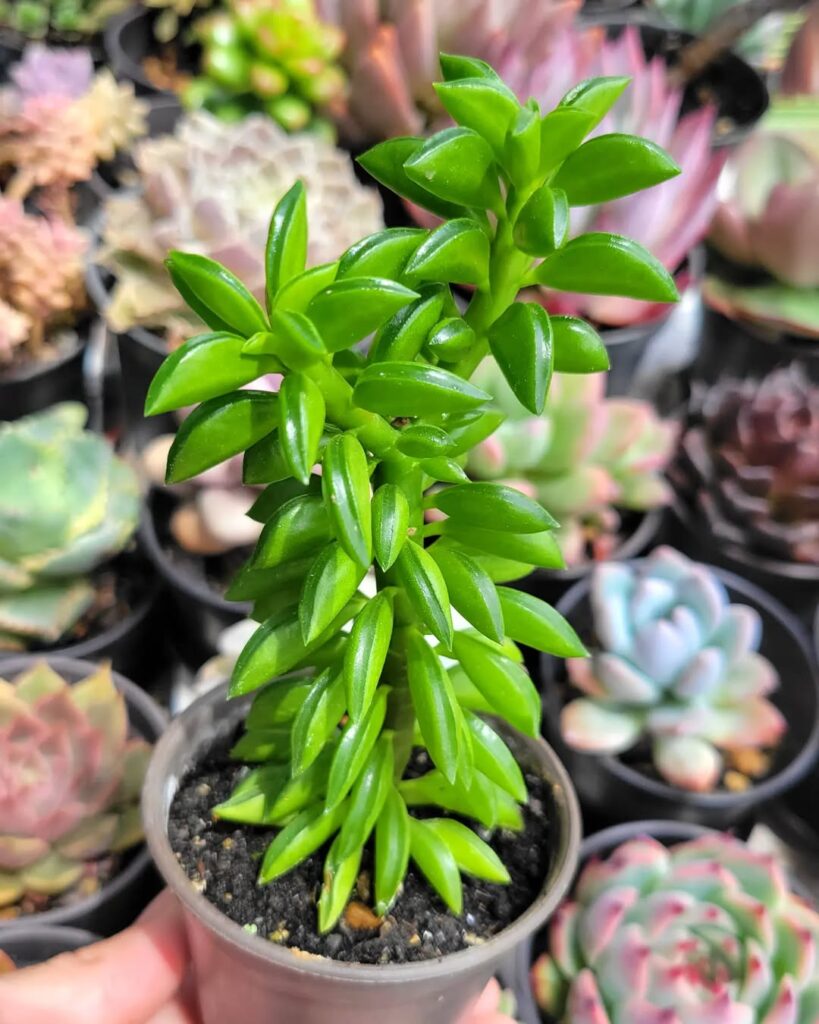
A compact succulent with boat-shaped leaves that develop a pink blush in cooler months. Native to the high-altitude ranges of the Peruvian Andes, it is well-adapted to dry conditions. The leaves are thick and fleshy, storing water to withstand drought periods. It thrives in bright, indirect light and requires well-draining soil to prevent root rot.
15. Peperomia verticillata
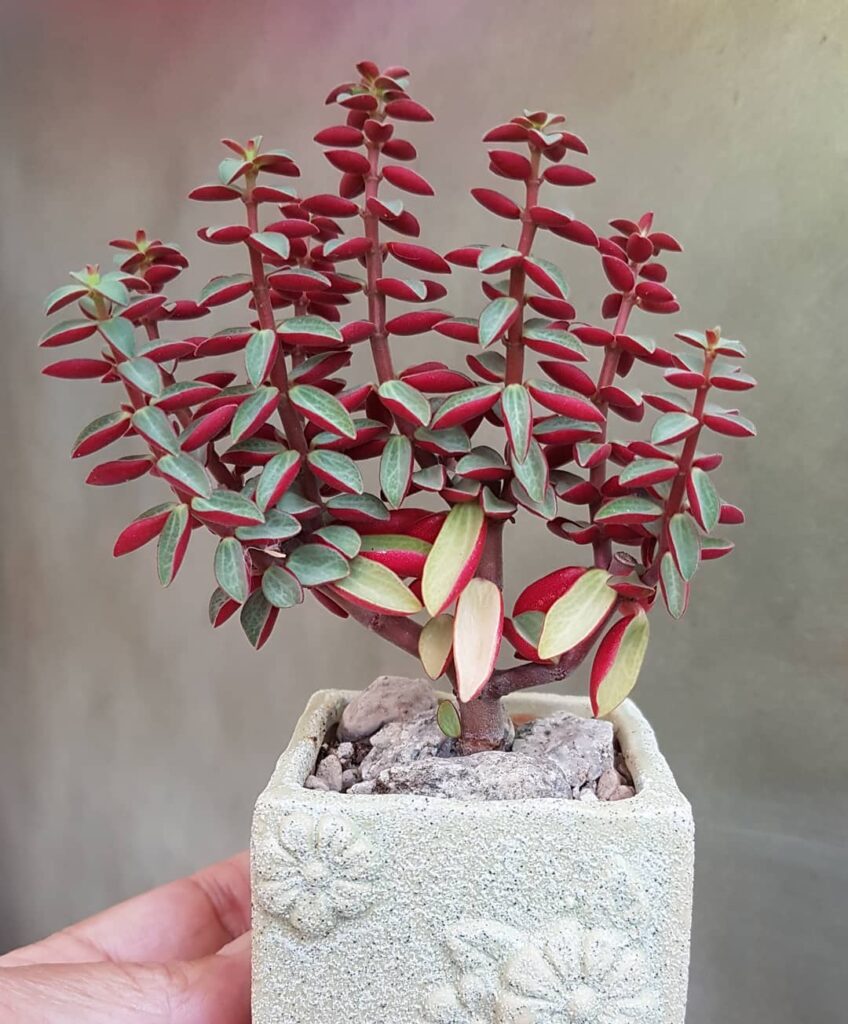
Also known as Red Log Peperomia, this variety has two-toned leaves—green on top and red underneath. It grows in whorls of five along the stems, creating a unique layered effect. This semi-succulent shrub can reach 20 inches tall and prefers bright, indirect light. It is an excellent choice for indoor gardens, adding depth and texture to plant collections.
16. Peperomia dolabriformis
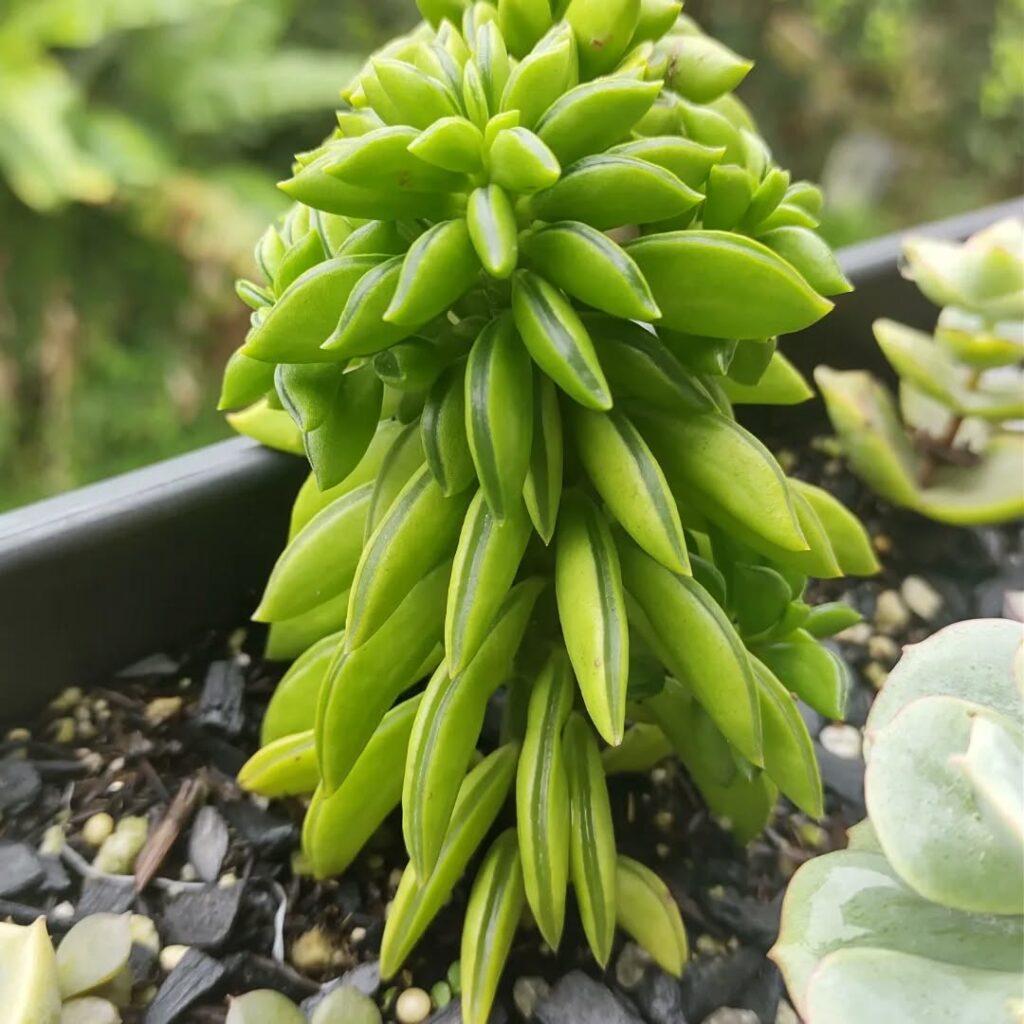
Commonly called Prayer Pepper, this shrubby succulent features thick, fleshy, light-green leaves folded in half upward, creating a narrow dark green window. It can grow up to 2 feet tall and develops woody stems with age. Native to Ecuador and Peru, it thrives in bright, indirect light and requires minimal watering. Its unique leaf shape makes it a fascinating addition to succulent collections.
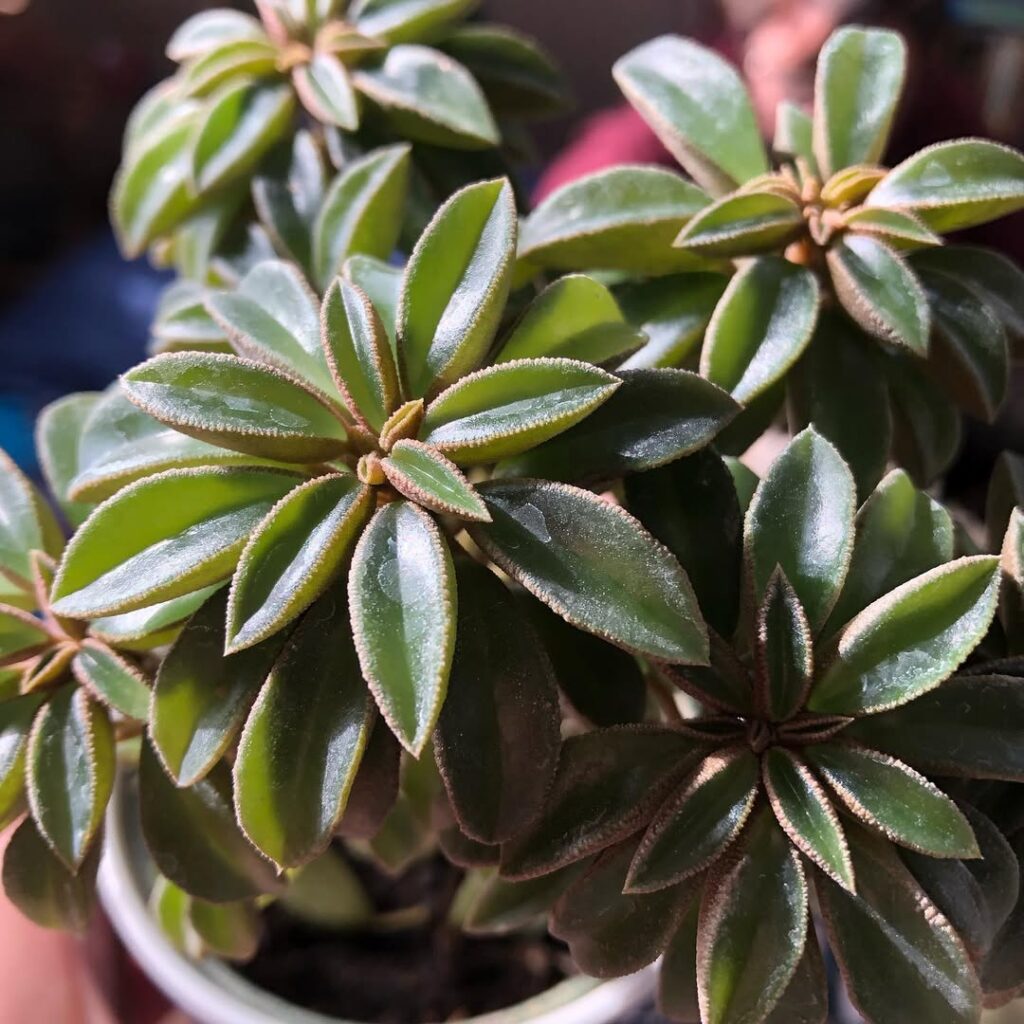 Peperomia dolabriformis var. glaucescens
Peperomia dolabriformis var. glaucescens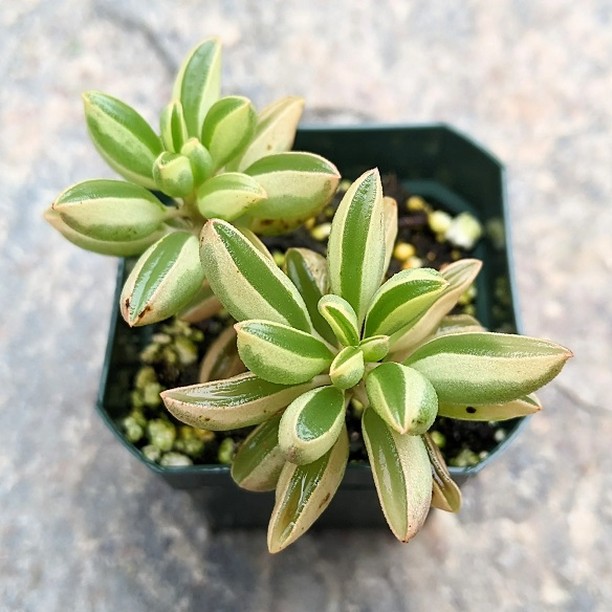 Peperomia dolabriformis variegata
Peperomia dolabriformis variegata
17. Peperomia columella
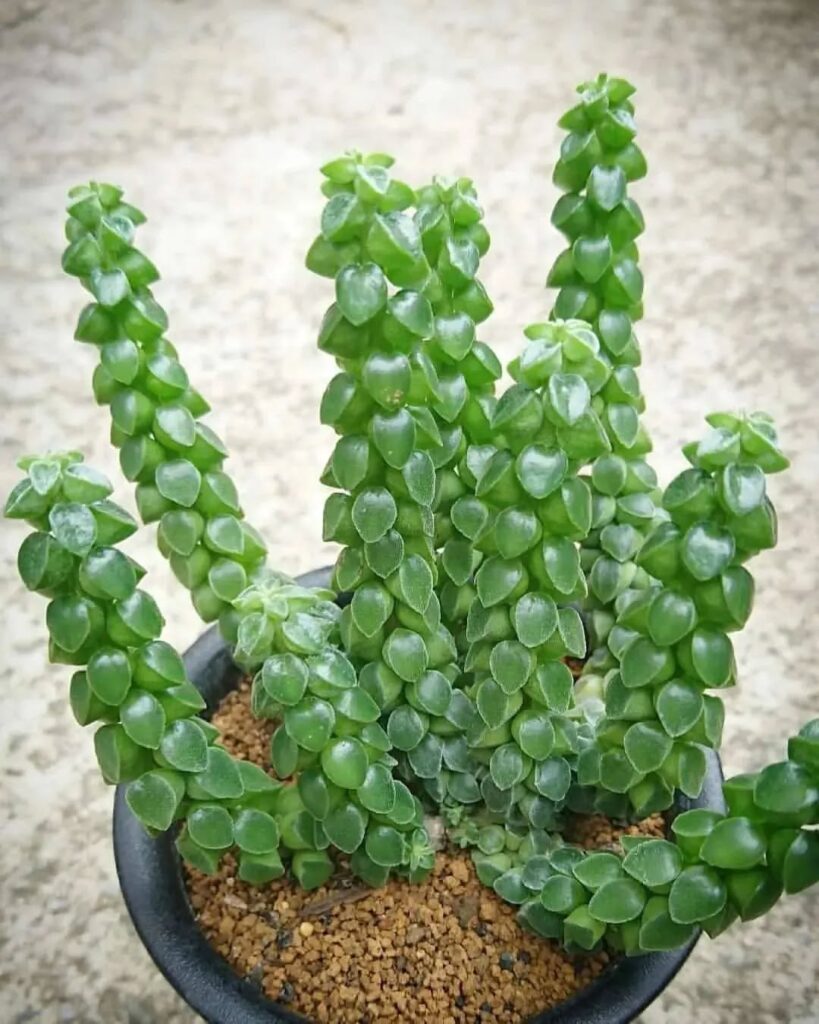
Known as Columnar Peperomia, this species has densely packed, bright green leaves with epidermal windows at the apex. It grows in dry areas, often in crevices on cliffs or sandy soil. The stems can reach 8 inches tall, forming snake-like structures. It thrives in bright, indirect light and requires well-draining soil to prevent excess moisture retention.
18. Peperomia graveolens
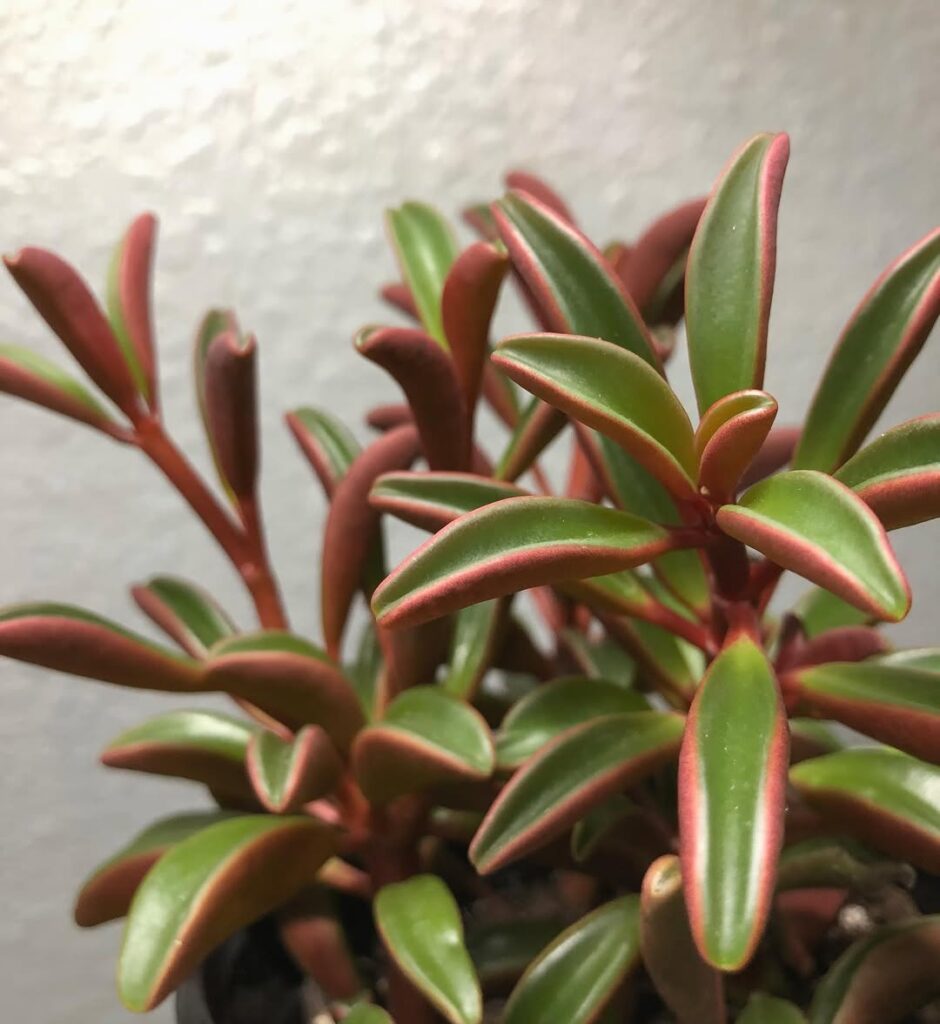
Also called Ruby Glow Peperomia, this variety has red stems and V-shaped leaves with green tops and burgundy undersides. It forms a compact cluster of short, branched stems, reaching 8 inches tall. Though it produces tiny yellowish-white flowers, its foliage remains the main attraction. It thrives in bright, indirect light and requires minimal watering.
19. Peperomia albovittata
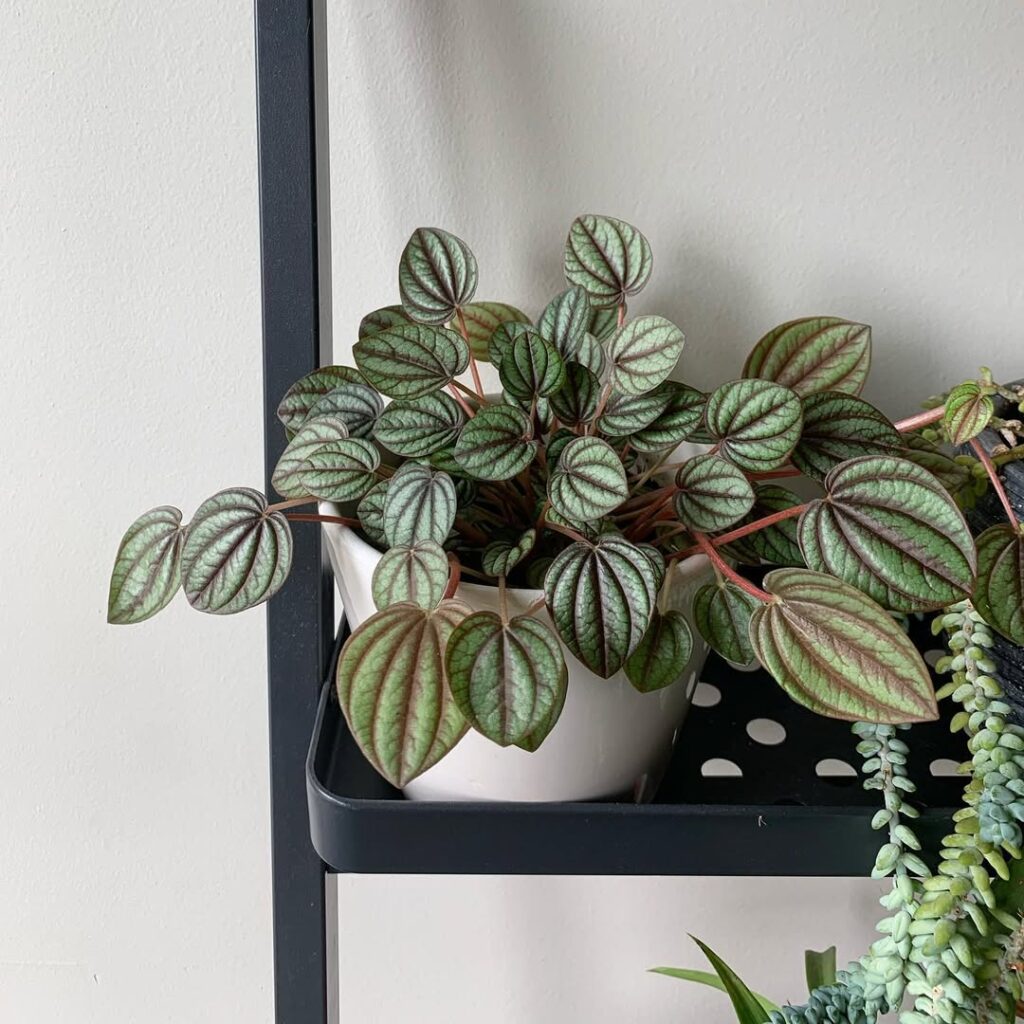
Commonly known as Piccolo Banda, this variety has textured, striped leaves in shades of green and purple. It is a compact, mound-forming plant that thrives in bright, indirect light. Its unique leaf patterns make it a favorite among collectors. It prefers moderate humidity and well-draining soil.
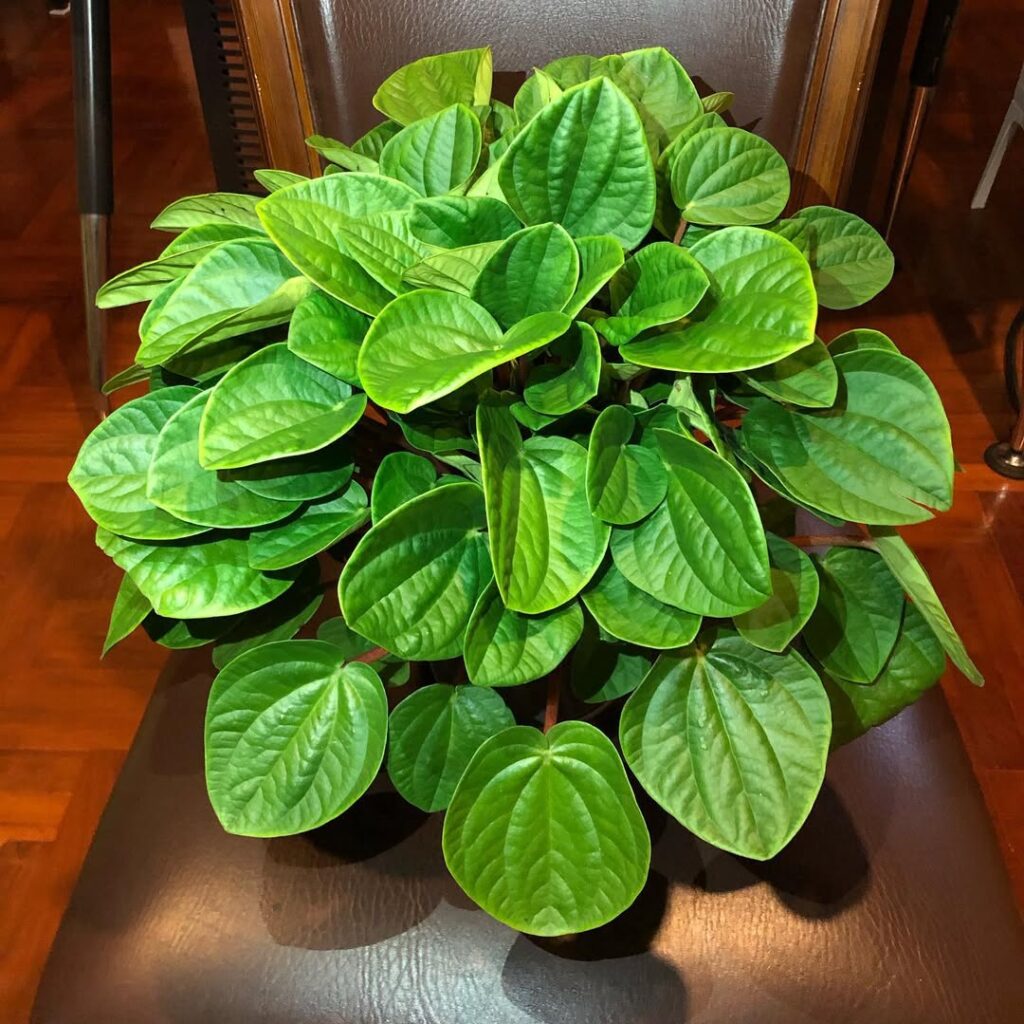 Peperomia albovittata ‘Rana Verde’
Peperomia albovittata ‘Rana Verde’
20. Peperomia orba
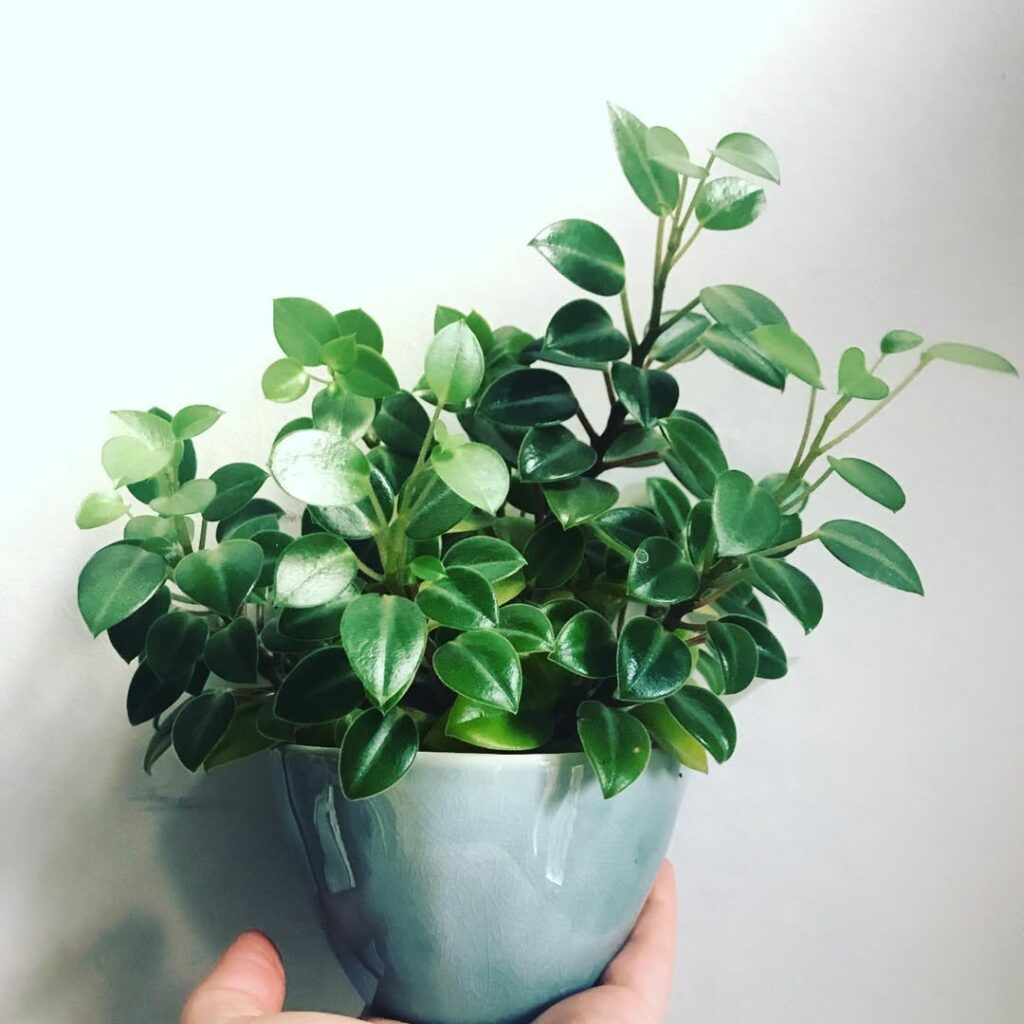
Also called Teardrop Peperomia, this variety has small, rounded leaves with a lime-green hue. It is a semi-succulent that stores water in its thick foliage, making it drought-tolerant. It thrives in bright, indirect light and requires minimal watering. Its compact size makes it ideal for desktops and small indoor spaces.
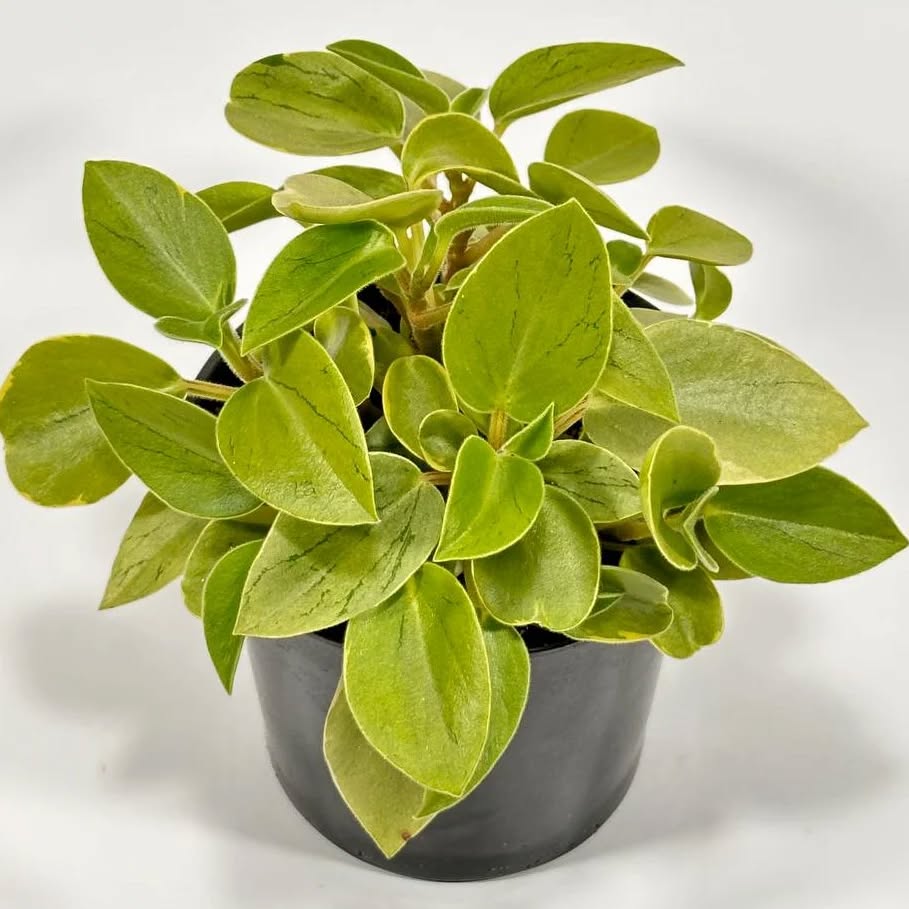 Peperomia orba ‘Pixie Lime’
Peperomia orba ‘Pixie Lime’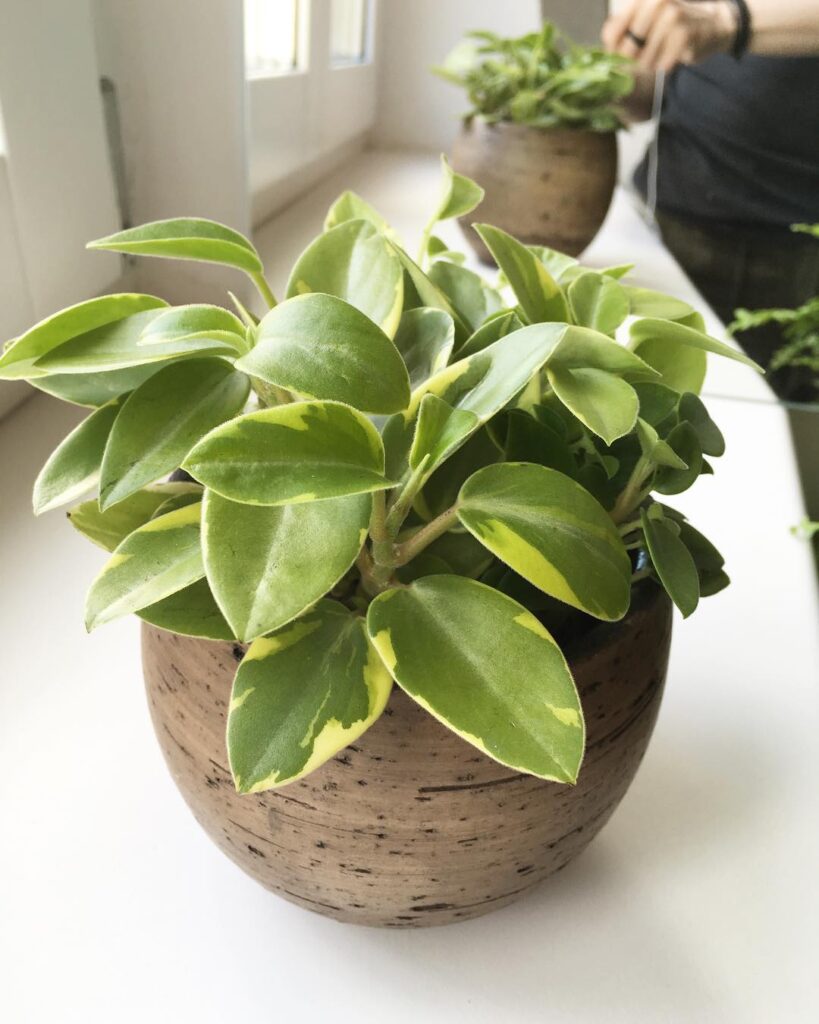 Peperomia orba variegata
Peperomia orba variegata
21. Peperomia puteolata
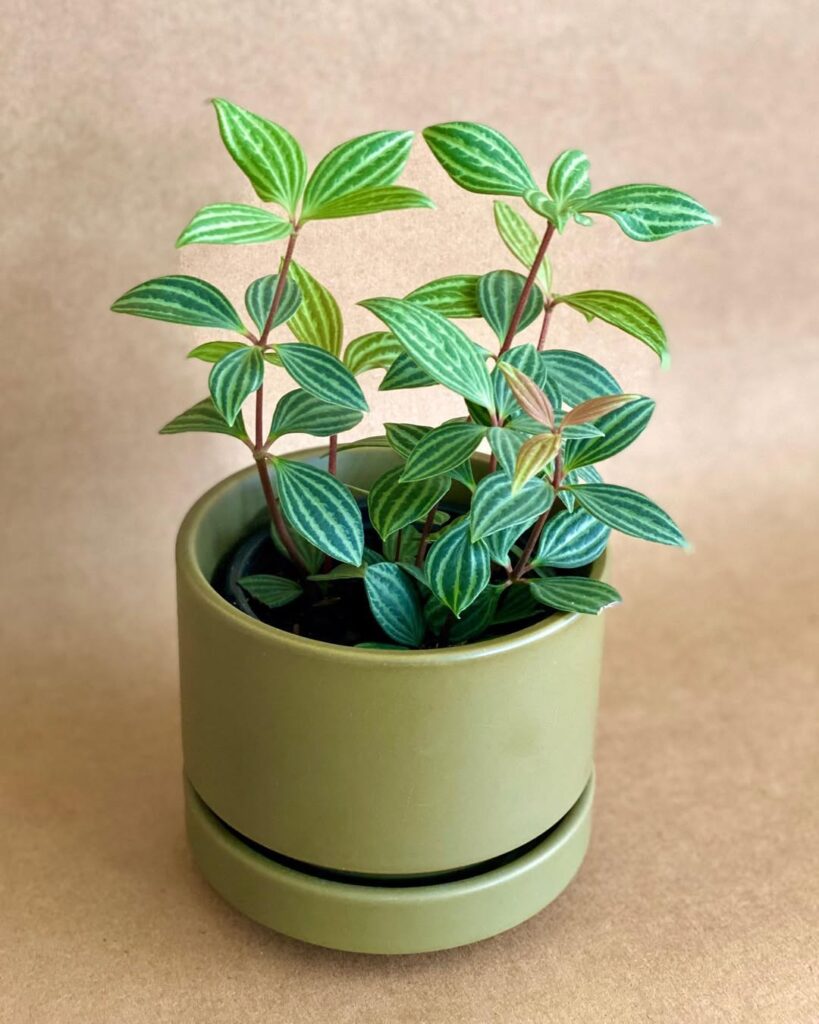
Also known as Parallel Peperomia, this species features small, oval-shaped leaves with alternating dark green and white stripes, resembling the rind of a watermelon. It has reddish-purple stems that can either trail over the sides of a pot or be trained to grow upright. Native to South America, it thrives in bright, indirect light and prefers well-draining soil. Though it produces small flower spikes, its patterned foliage is the main attraction.
22. Peperomia japonica
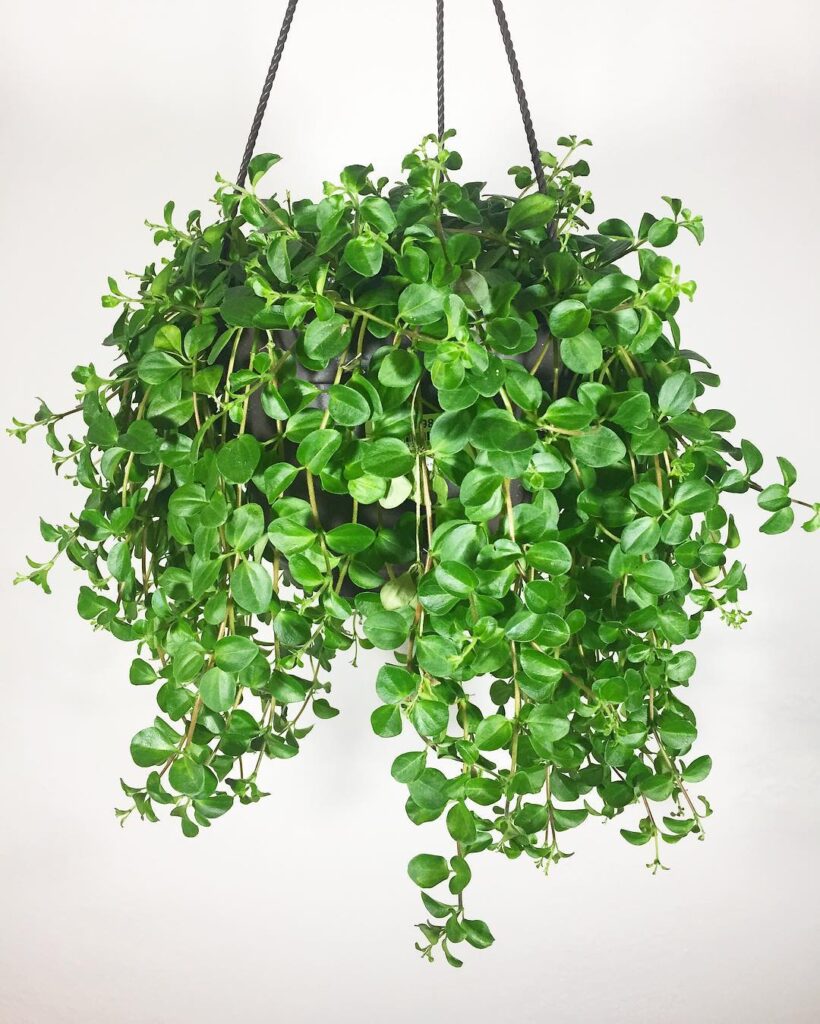
This vining epiphyte has tiny, round emerald-green leaves and thin green stems, creating a bushy appearance. It is a low-maintenance plant that thrives in terrariums, hanging baskets, or tabletop planters. It prefers bright, indirect light and well-draining soil, holding water in its stems like a succulent. Though adaptable to lower humidity, it flourishes best in moderate moisture levels.
23. Peperomia nitida
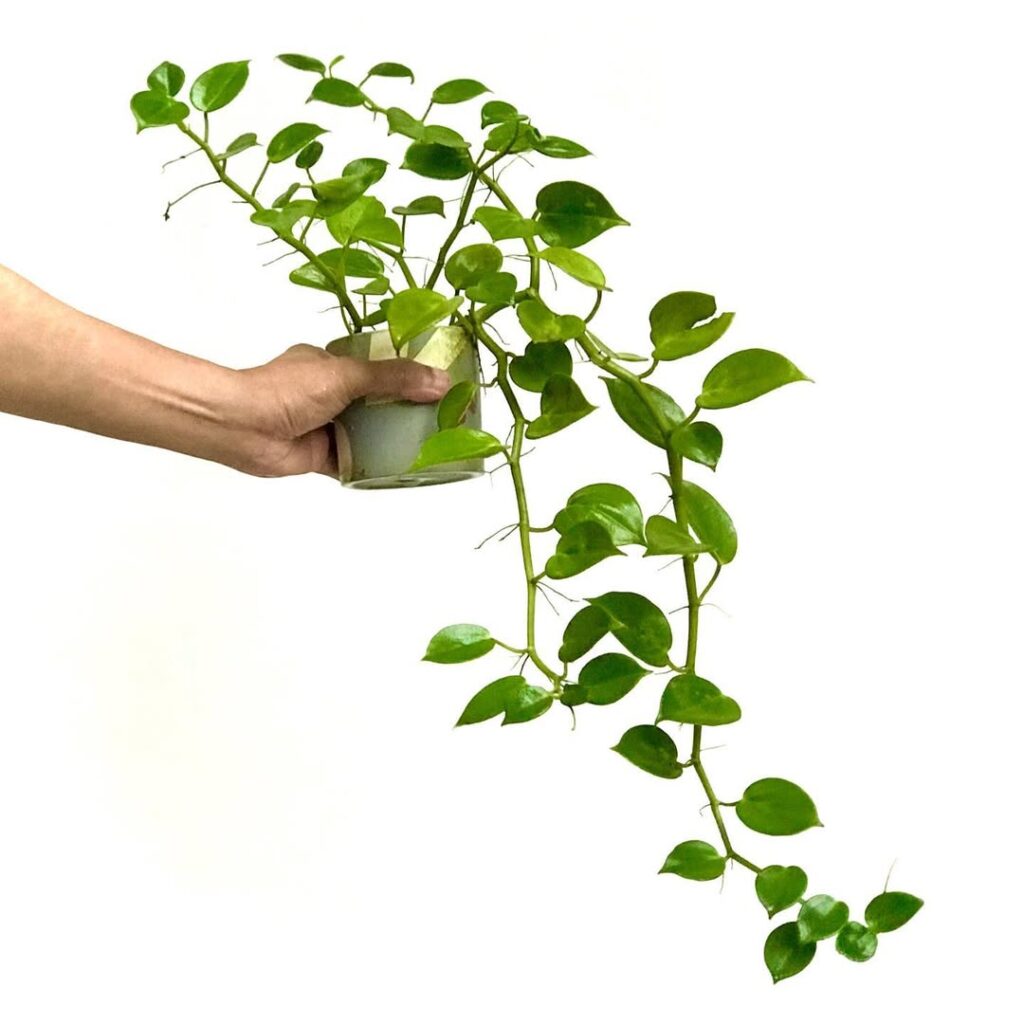
Often confused with Peperomia scandens, this trailing variety has heart-shaped, fleshy leaves that can be solid green or variegated. It is sometimes sold as Cupid Peperomia, though it is distinct from Peperomia serpens. Native to South America, it thrives in warm, humid environments and prefers bright, indirect light. Its cascading growth makes it ideal for hanging baskets.
 Peperomia nitida variegata
Peperomia nitida variegata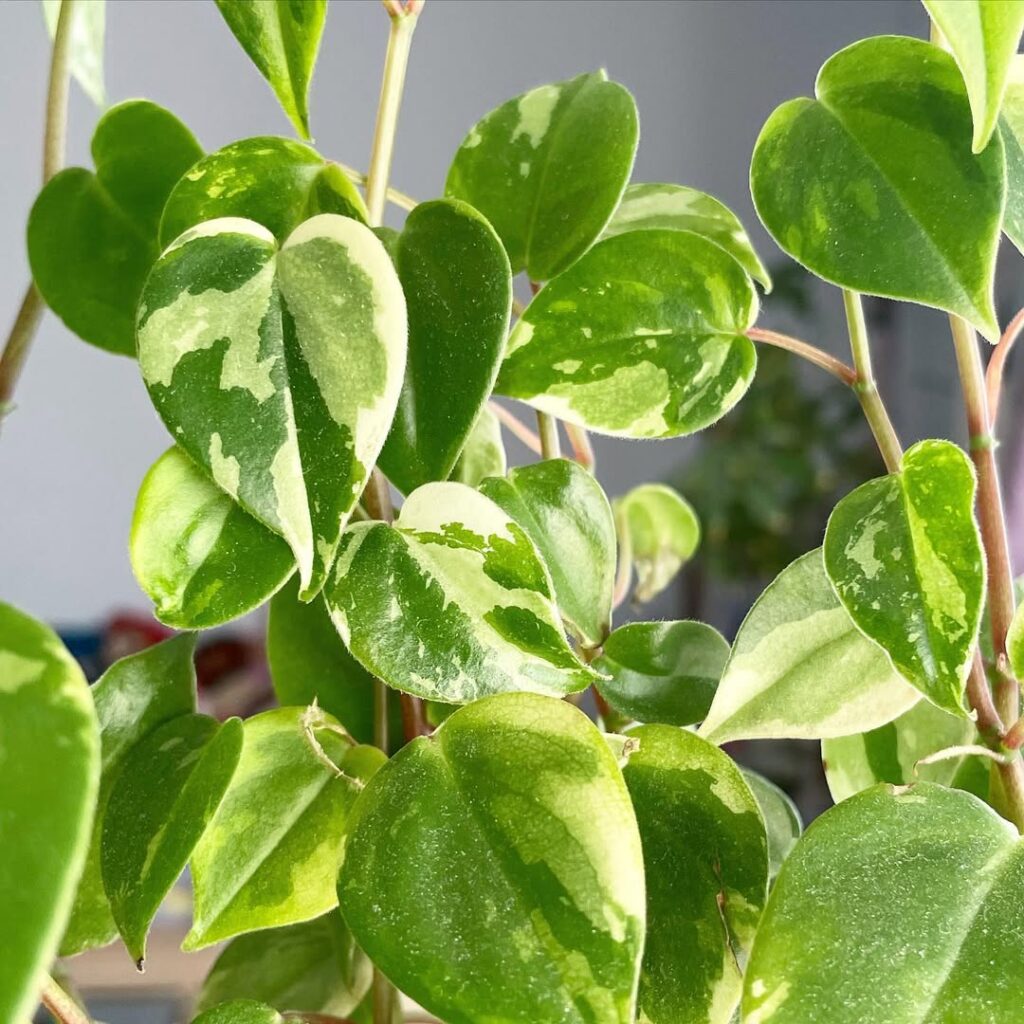 Peperomia nitida ‘Crane’s Flecked’
Peperomia nitida ‘Crane’s Flecked’
24. Peperomia trinervula
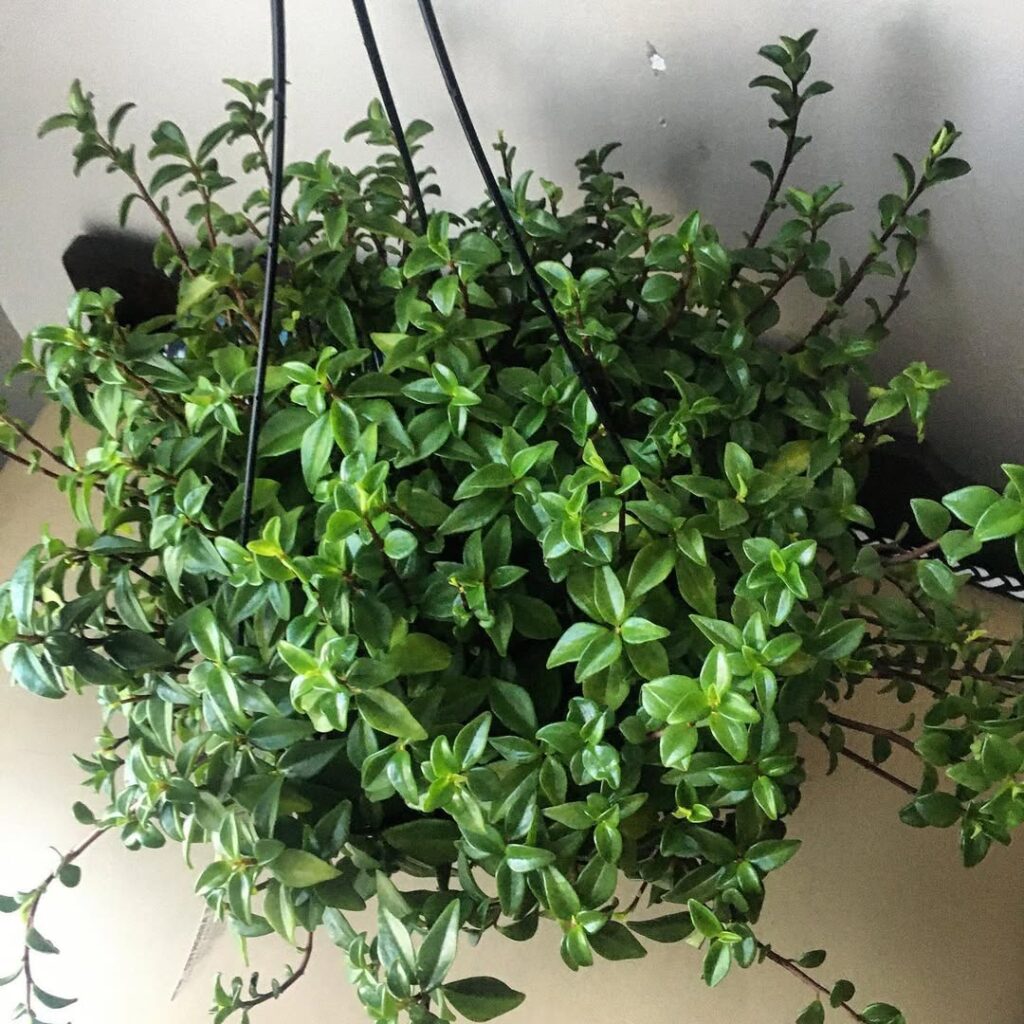
A semi-succulent epiphyte, this species has small, lance-shaped leaves with three distinct veins running through them. Native to Venezuela, it thrives in bright, indirect light and prefers a well-draining soil mix with organic nutrients. It has a compact, spreading growth habit, making it suitable for terrariums or small pots. Though it tolerates some dryness, it benefits from moderate humidity.
25. Peperomia pereskiifolia
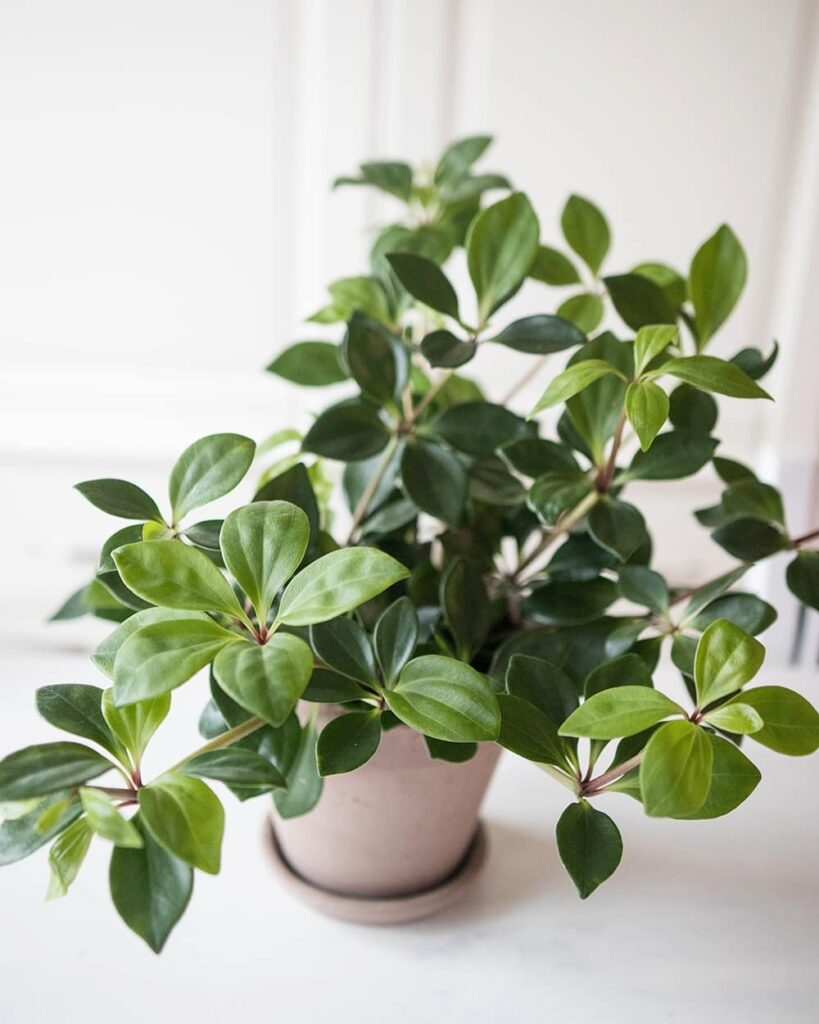
This creeping epiphyte is native to Colombia and Venezuela, where it is considered a symbol of good luck. It has elongated, glossy green leaves and thrives in warm, humid conditions with dappled sunlight. It prefers well-draining soil and requires moderate watering to prevent root rot. Though slow-growing, it is an excellent choice for terrariums and hanging baskets.
26. Peperomia rotundifolia
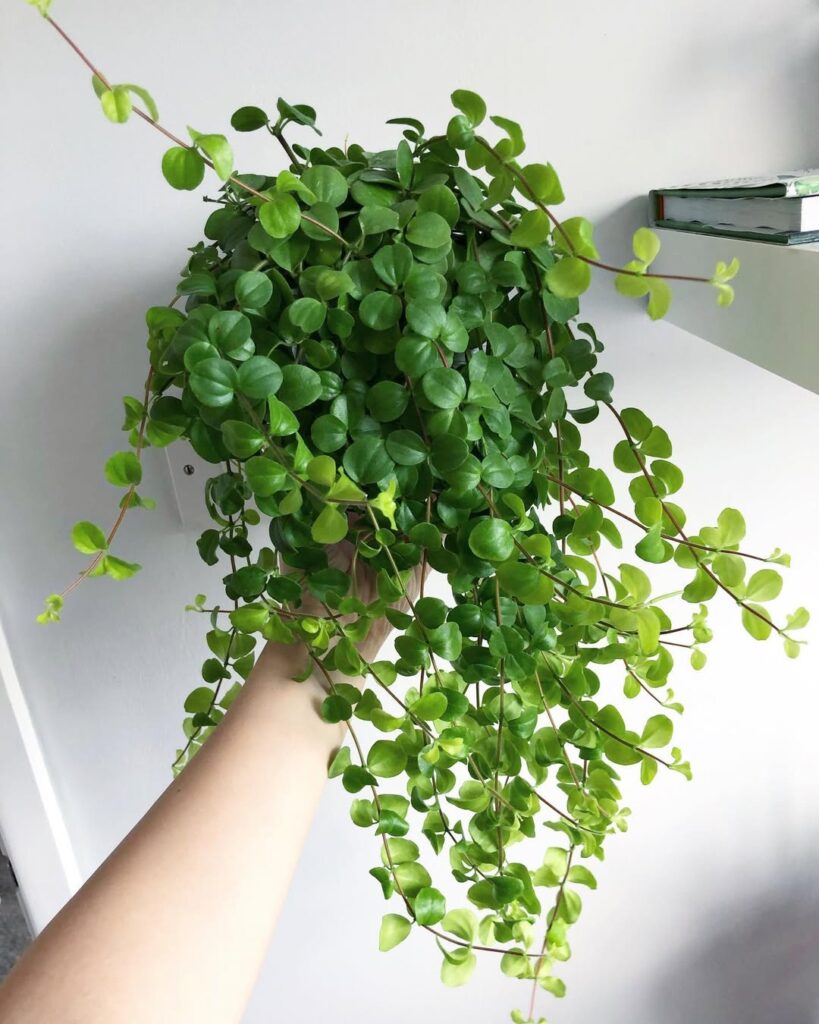
Also known as Trailing Jade, this epiphytic species has tiny, round, fleshy leaves that grow along soft, trailing stems. It is native to South American rainforests, where it thrives in moist, shaded conditions. It prefers high humidity but is sensitive to overwatering, requiring well-draining soil. Its cascading growth makes it perfect for hanging baskets or terrariums.
27. Peperomia eburnea

This trailing species is native to Colombia and Ecuador, where it grows in wet tropical biomes. It has green foliage with a single white stripe and red-spotted leaf backs, creating a striking contrast. Though it prefers humid environments, it can adapt to indoor conditions with proper care. It thrives in bright, indirect light and requires moderate watering.
28. Peperomia fraseri
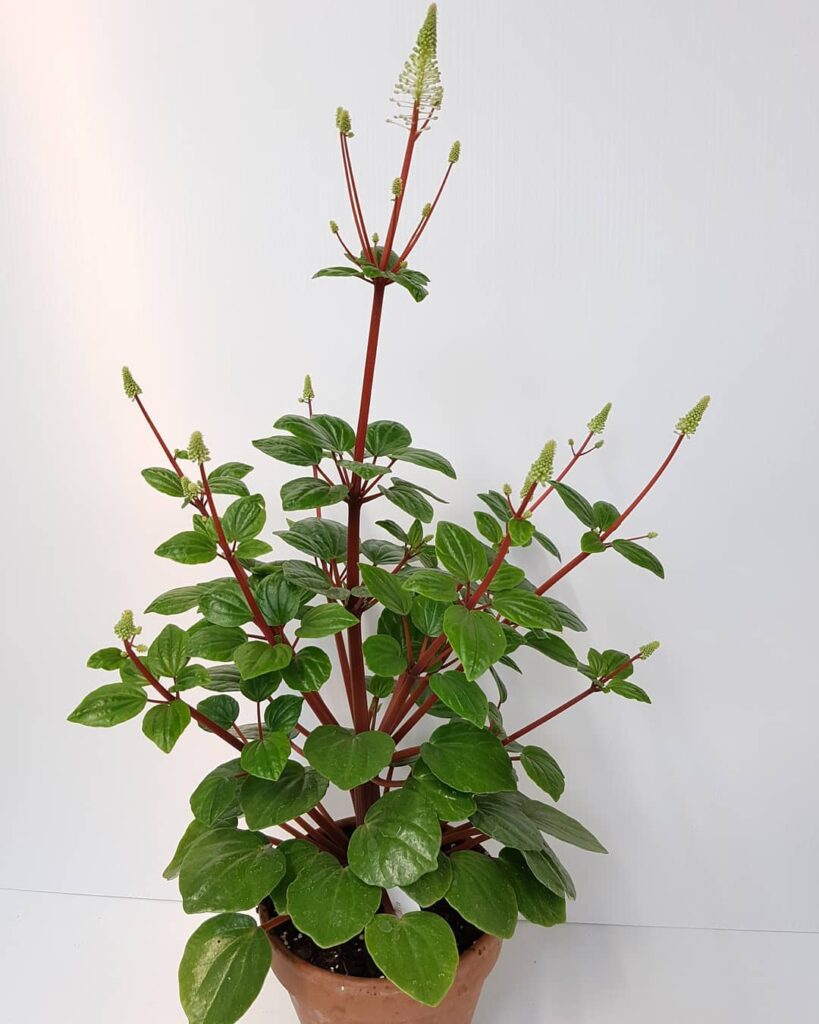
Also known as Flowering Peperomia, this species is rare among Peperomias for its noticeable inflorescence. It has upright stems with rounded or heart-shaped glossy green leaves and incised venation. Unlike most Peperomias, it produces fragrant white bottle-brush flowers on reddish peduncles. Native to Colombia and Peru, it thrives in bright, indirect light and well-draining soil.
29. Peperomia galioides
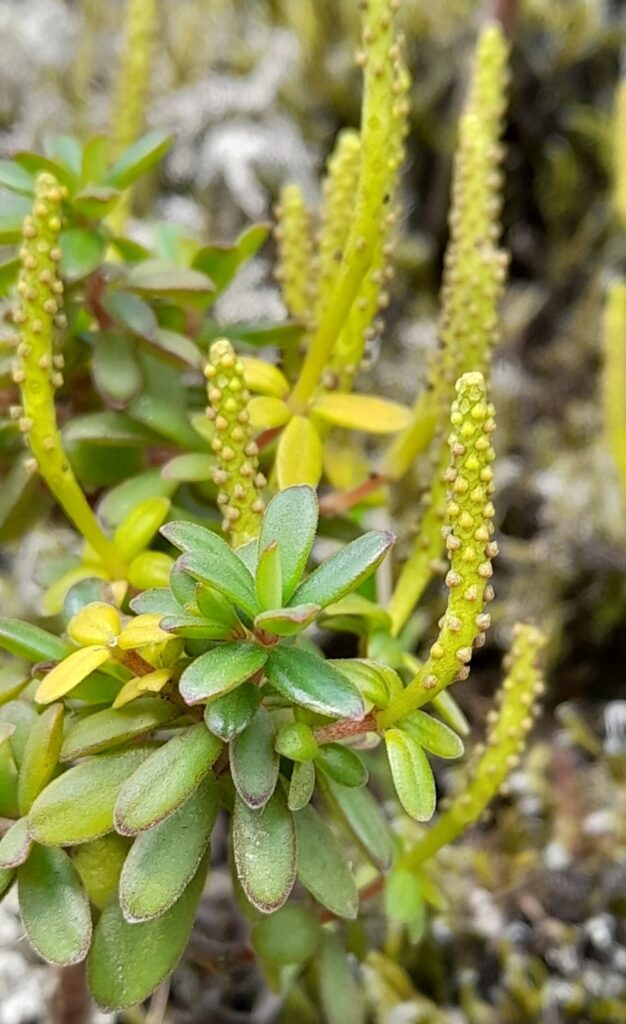
This endangered species is native to Mexico, Central America, and South America, where it grows as an epiphyte in wet tropical biomes. It has petioles less than 1mm long and small leaves between 5-30mm. Traditionally used in Peruvian herbal medicine, it has also been studied for its essential oils. It thrives in humid environments and prefers bright, indirect light.
30. Peperomia glabella
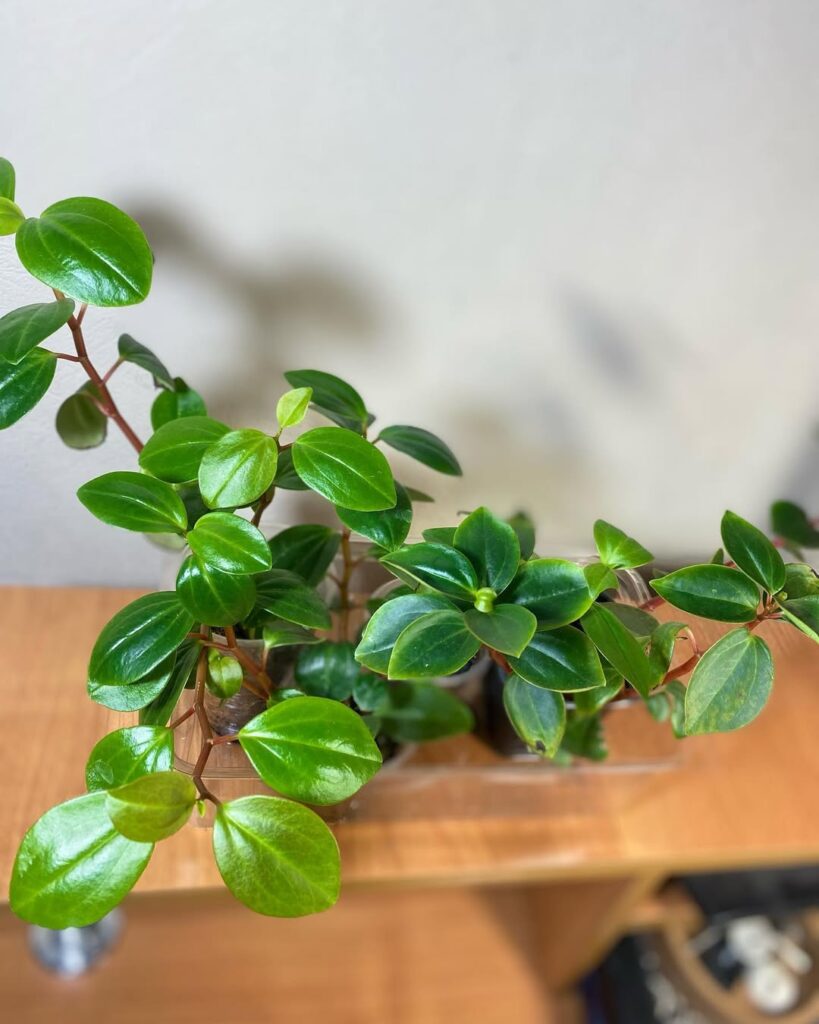
Also known as Cypress Peperomia, this species has smooth, glossy green leaves and a trailing growth habit. It is native to southern North America and Central South America, where it thrives in warm, humid conditions. It prefers bright, indirect light and well-draining soil, making it ideal for terrariums or hanging baskets. Though adaptable, it benefits from moderate humidity.
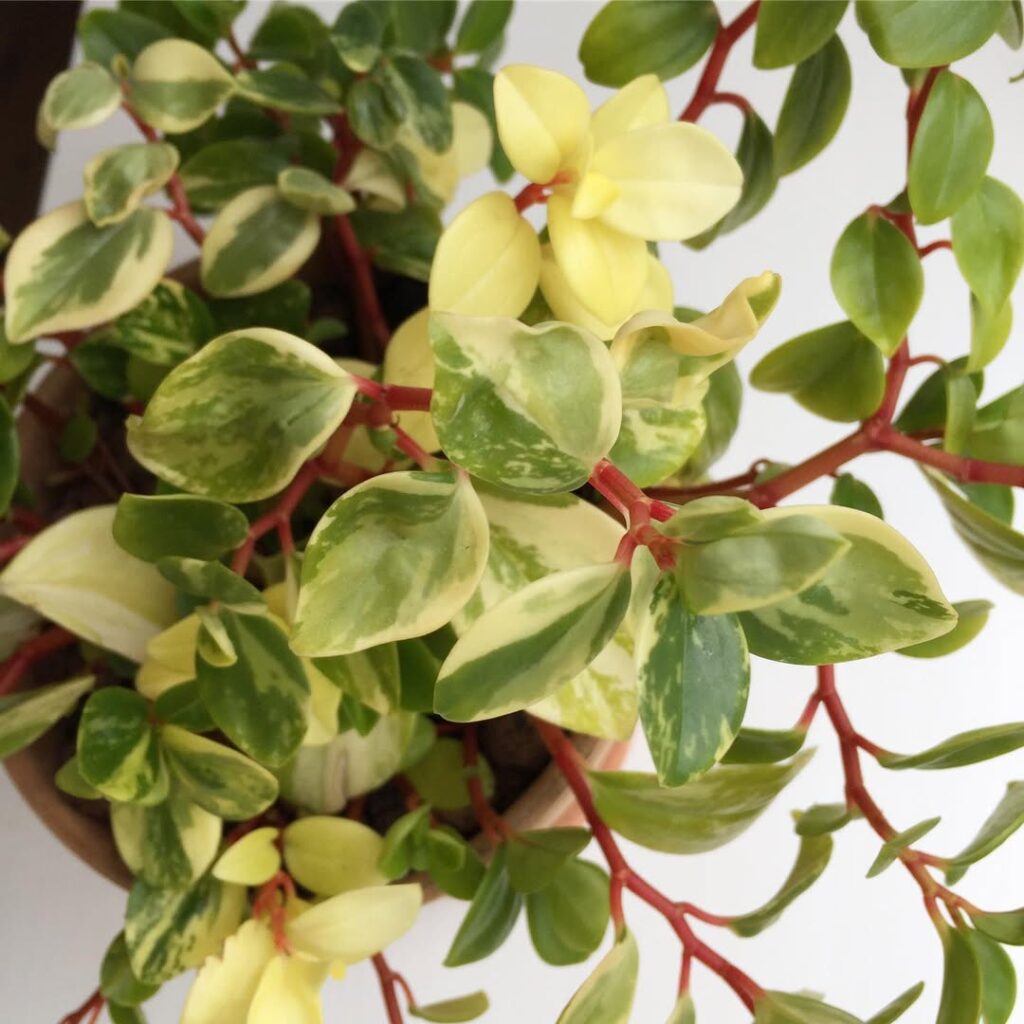
31. Peperomia latifolia
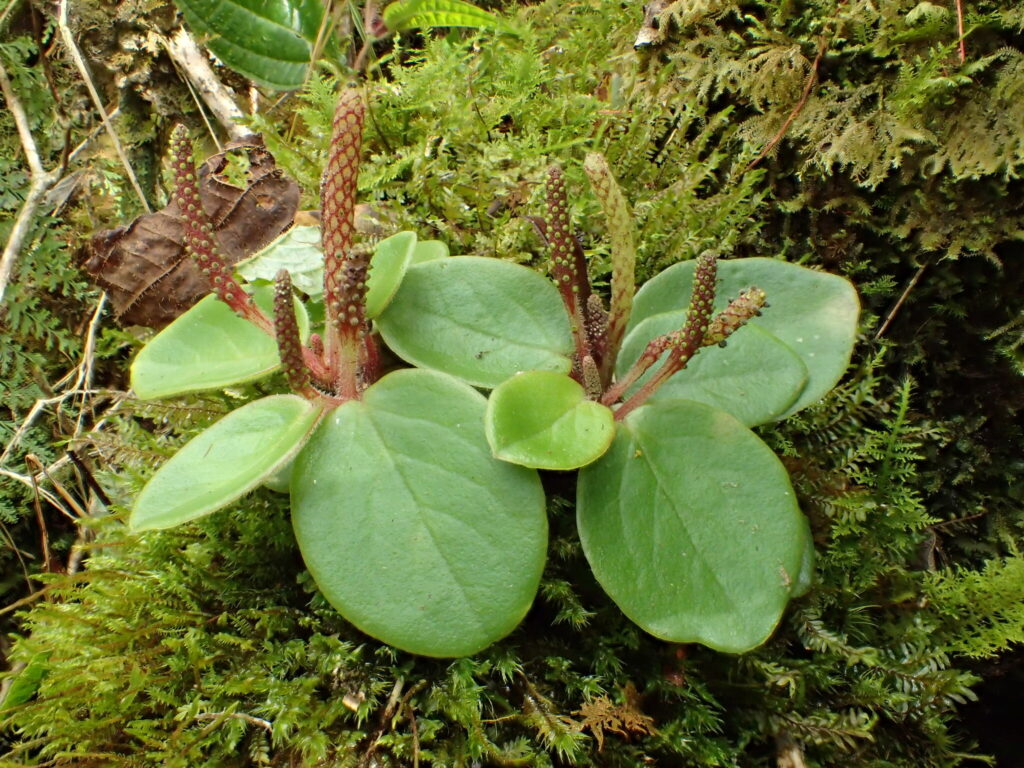
Peperomia latifolia is an epiphytic species native to the Hawaiian Islands, thriving in wet tropical biomes. It has pale to dark red stems that grow upright or slightly trailing from a short base. The leaves vary in shape, ranging from elliptic-obovate to orbicular, with a firm texture and subtle green hues. This species prefers humid environments and well-draining soil, making it ideal for terrariums or shaded indoor spaces.
32. Peperomia magnoliaefolia
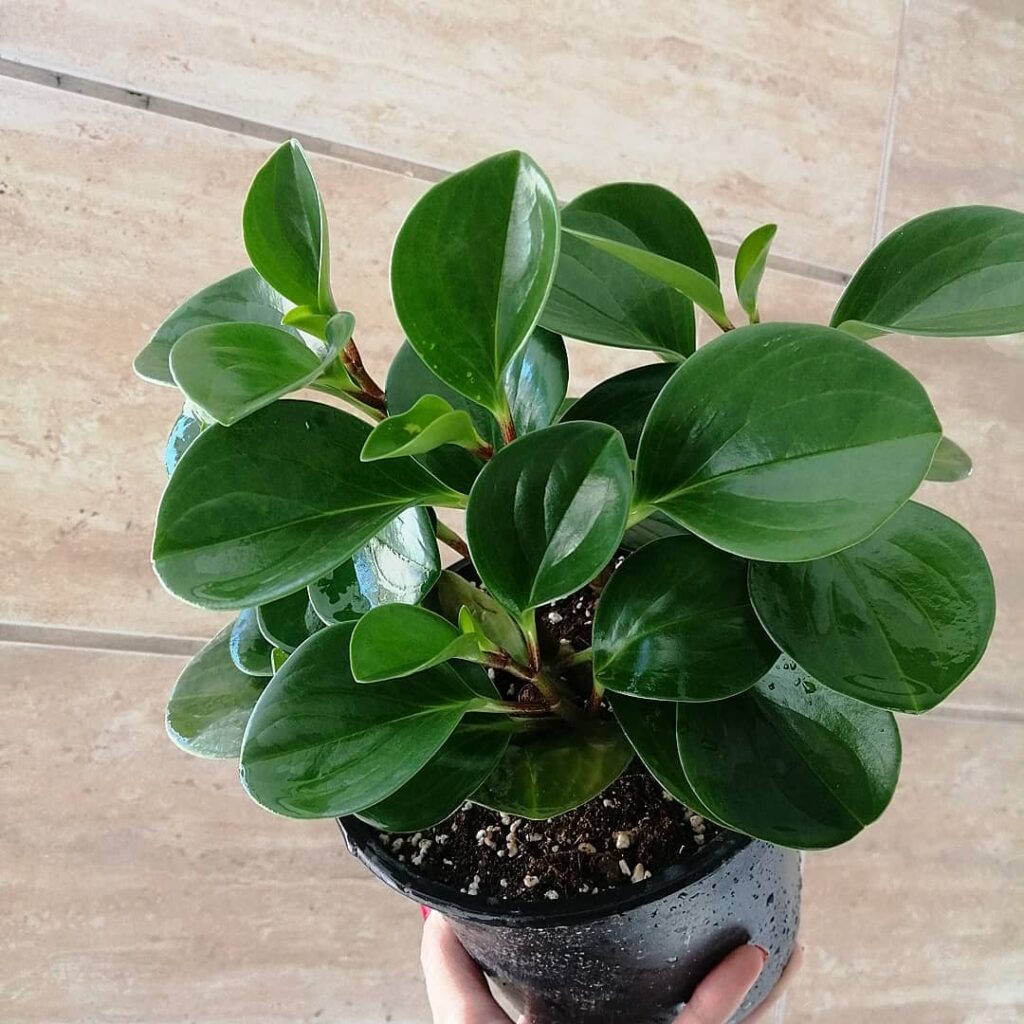
Also known as Spoonleaf Peperomia, this species has thick, fleshy leaves that resemble a spoon. It is native to southern Florida, Mexico, and parts of South America, where it thrives in warm, humid conditions. The plant is often confused with Peperomia obtusifolia, but its leaves are slightly more succulent. It prefers bright, indirect light and well-draining soil to prevent root rot.
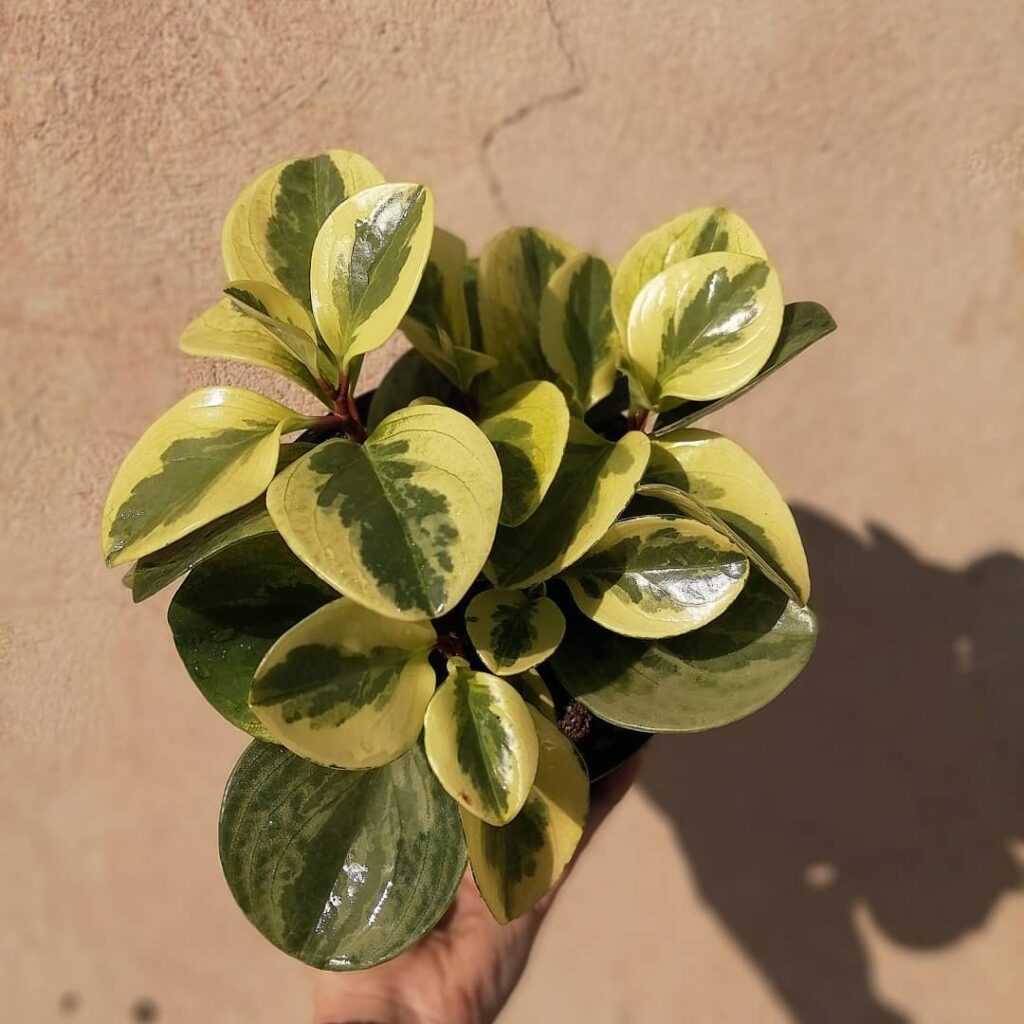 Peperomia magnoliaefolia variegata
Peperomia magnoliaefolia variegata
33. Peperomia monticola

Peperomia monticola is a geophytic species endemic to Mexico, meaning it stores water and nutrients in an underground tuber. During dry periods, its above-ground foliage withers, but the plant survives underground until rainfall triggers new growth. It thrives in seasonally dry tropical biomes and prefers well-draining soil. This adaptation makes it highly drought-resistant and suitable for xeriscaping.
34. Peperomia rugosa
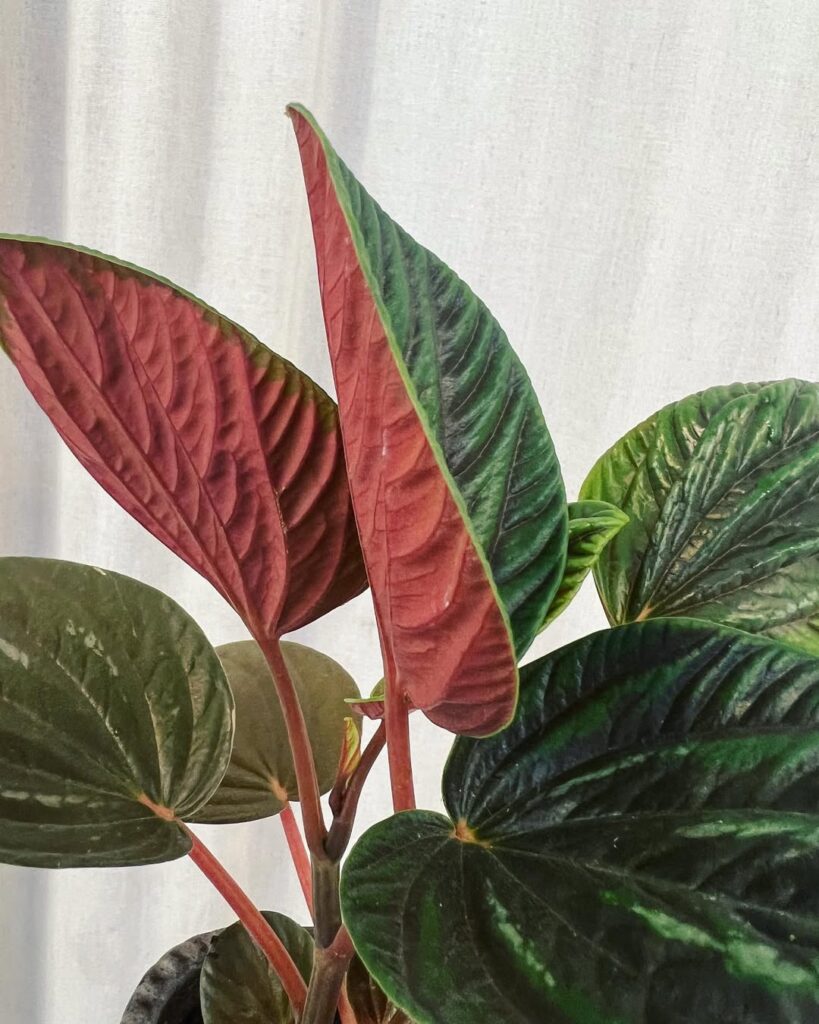
Peperomia rugosa is a rare species native to Ecuador and Peru, known for its thick, textured leaves with deep wrinkles. The foliage is typically dark maroon with red undersides, creating a striking contrast. Over time, the leaf margins develop a lime-green hue, making it even more visually appealing. It thrives in warm, humid environments and is well-suited for terrariums or indoor gardens.
35. Peperomia ‘Hope’
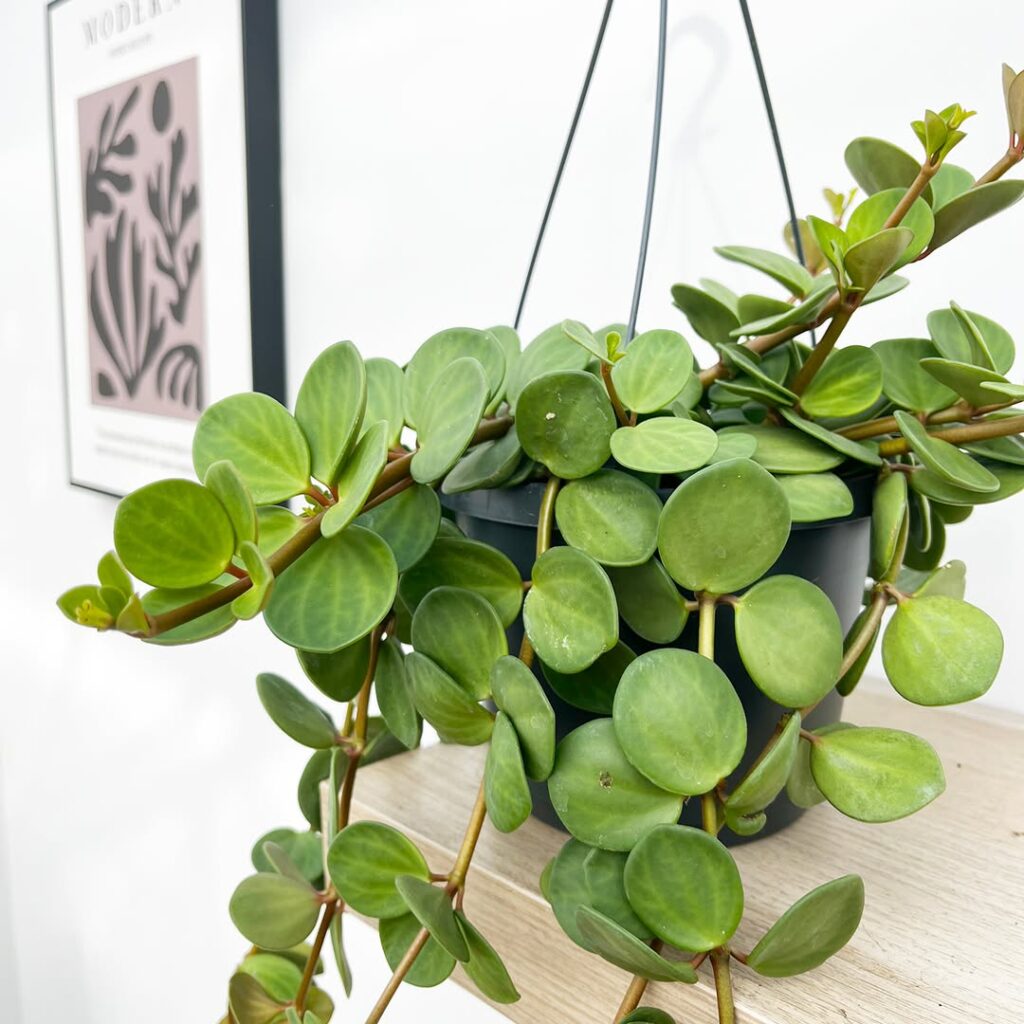
Peperomia ‘Hope’ is a hybrid variety derived from Peperomia deppeana and Peperomia quadrifolia, known for its small, round, succulent-like leaves that grow in clusters of three or four along soft, trailing stems. This epiphytic perennial thrives in hanging baskets due to its compact growth and evergreen foliage. While it can produce tiny flowers on long spikes, they are insignificant compared to its lush greenery. Peperomia ‘Hope’ prefers bright, indirect light, well-draining soil, and occasional misting to maintain humidity. Its ability to withstand some neglect makes it an excellent choice for beginners and indoor plant enthusiasts.
36. Peperomia tetraphylla
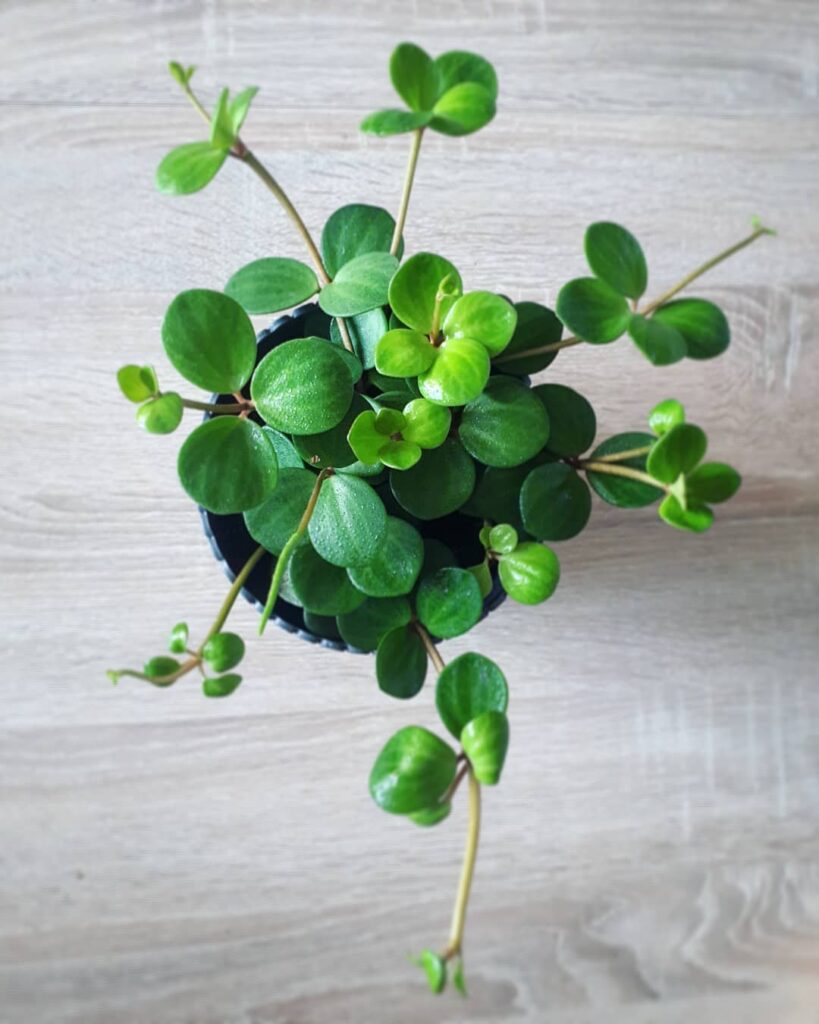
Also known as Four-Leaved Peperomia, this low-growing herb has creeping stems that sometimes form dense mats. The leaves grow in whorls of three to four, typically green but sometimes reddish underneath. It thrives in wet evergreen forests, often as an epiphyte on trees or fallen logs. This species is well-suited for terrariums or shaded indoor spaces.
37. Peperomia urocarpa
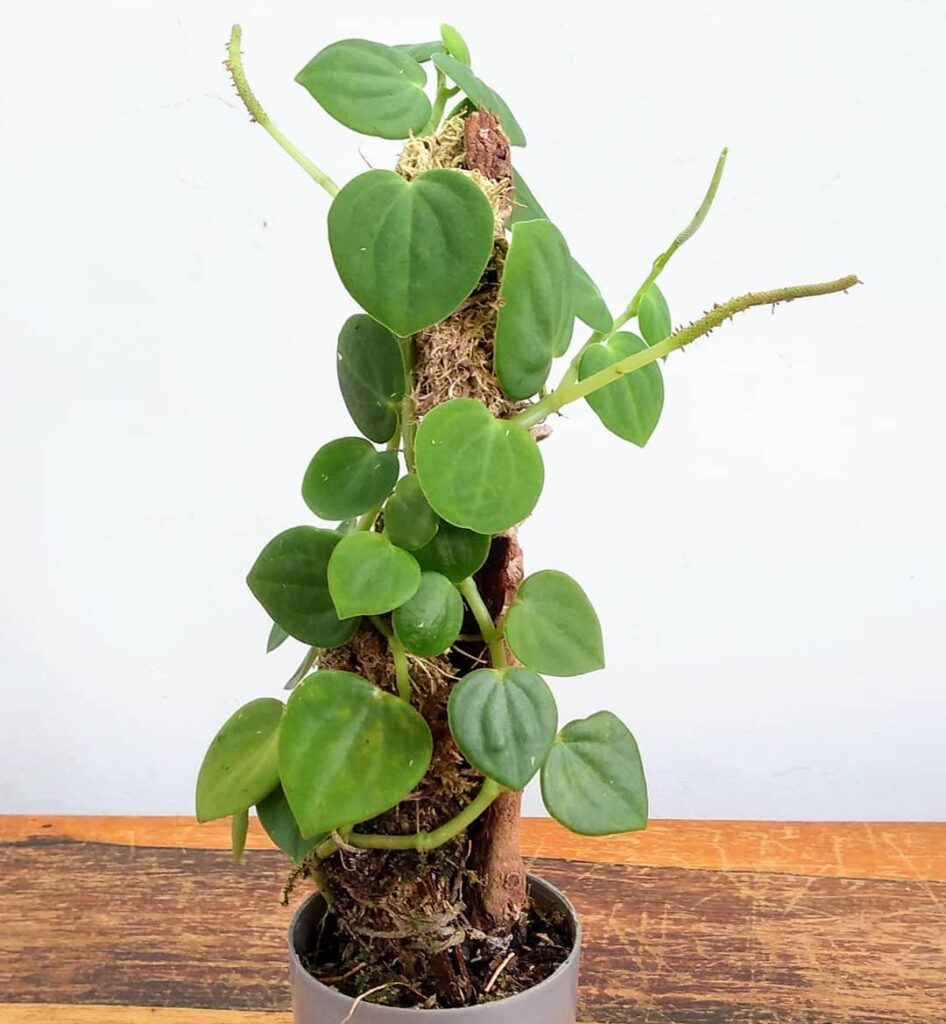
Peperomia urocarpa, sometimes called Brazilian Peperomia, is a perennial herb native to South America, Mexico, and parts of the Caribbean. It has a creeping habit with small, ovate leaves, making it ideal for ground cover or hanging baskets. It thrives in moist, shady habitats and prefers well-draining soil. This variety is often used in terrariums due to its compact growth.
38. Peperomia asperula

Peperomia asperula is a shrubby succulent with thick stems and fleshy, glossy green leaves. The undersides of the leaves have a grainy, tan texture, adding to its unique appearance. It can grow up to 12 inches tall and produces creamy white flower spikes on tall stalks. Native to Peru, it thrives in bright, indirect light and requires minimal watering.
39. Peperomia incana

Also called Felted Peperomia, this species has thick, heart-shaped leaves covered in a soft, velvety down. The fuzzy texture helps protect it from direct sunlight, making it well-suited for bright, indirect light. It is native to Brazil and has been cultivated since 1815 due to its ornamental appeal. This variety is drought-tolerant and requires minimal watering.
40. Peperomia griseoargentea
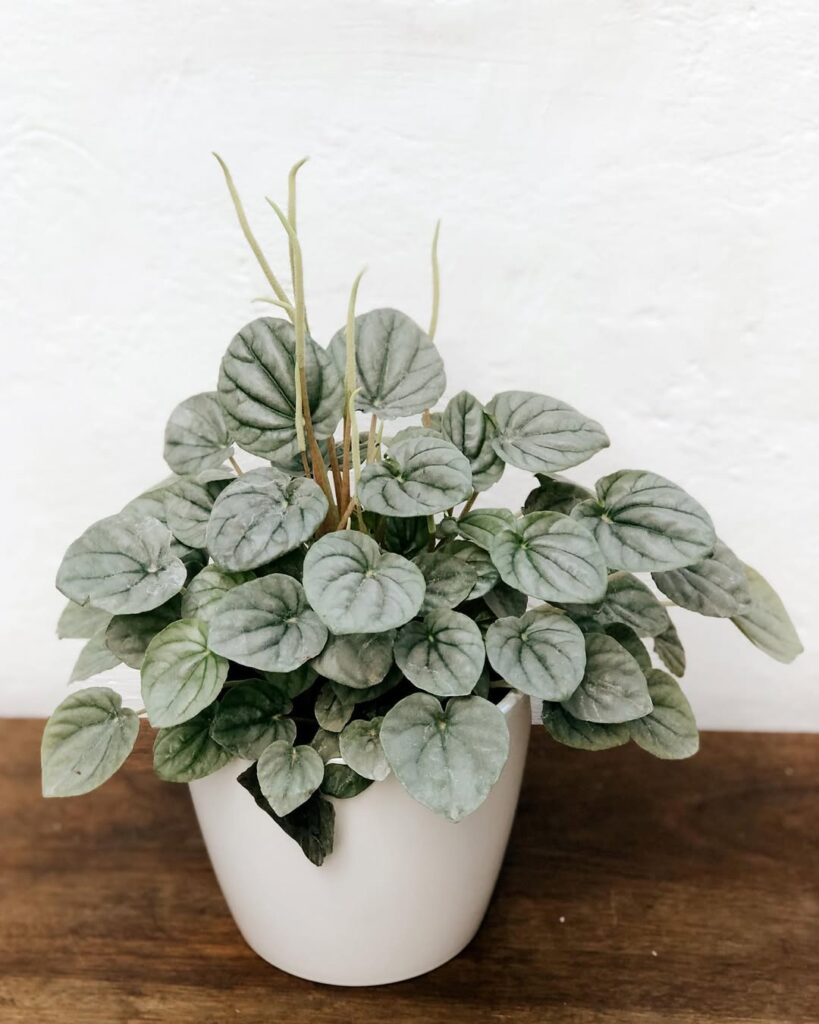
Also known as Silver Leaf Peperomia, this compact, clumping species has heart-shaped, metallic, silvery-green leaves with a rippled texture. The deep green veins contrast beautifully against the lighter leaf surface. It thrives in bright, indirect light and prefers moist, well-draining soil. This variety is easy to care for and makes an excellent addition to indoor gardens.

